Don't wanna be here? Send us removal request.
Text
Projecting Impact Tools at the Highest Level: How Objectively Assessing Raw Athleticism Provides a Peak into the Future and Can Help Improve Accuracy in Player Procurement

I’ve long been a proponent of raw athleticism in baseball and in the past year or so, I’ve come to the realization that it’s much bigger than that – it’s all sports. For the sake of this blog, I’ll do my best to stick to baseball.
Athletes with greater speed and power traits simply have higher ceilings. There are so many other factors to the success of the athlete and this starts with: do they have enough ability to play their sport?
What do I mean by ability?
For a pitcher: it is feel to pitch, feel to spin, ability to throw strikes, movement profiles, etc.
For a position player: it is largely, will they hit enough? Can they defend enough at a high-level?
These are all questions that are answered every year by a group of professionals that are very good at their jobs: scouts. The trickiest part of their job is putting an objective grade on a crucial part of the profile: athleticism.
It is not easy to define.
Ask 10 different people the definition of athleticism and you’ll get 10 different answers. Some will go down the road of playing multiple sports and most will get muddy before they shoot it straight. Don’t get me wrong, I think playing multiple sports as a kid has tremendous value, but it’s also hard to quantify the impact. When it’s hard to quantify, it’s hard to apply in decision-making. Not that it doesn’t have a role in decision-making, but that’s not for this blog.
For me, there are certain athletic qualities that are clear-cut and objective that play a critical role in the future of what an athlete can be (speed and power). It’s what I call raw athleticism and it effectively translates to what’s under the hood. Some athletes are spectacular at their sport and are running a V6 and some athletes are average at their sport and are running a Hemi. The athlete with the Hemi has much more room for error as the game gets faster.

For more on the balance between raw athleticism and sport-specific skill, check out this piece I put together on Spencer Jones ahead of the 2022 MLB Draft and read the first section: “A Perspective on Athleticism”
Quantify what’s under the hood and peak into the future potential of an athlete.
Using the Loden Score
With Loden Sports, we developed the Loden Score to be an unbiased, objective way to quantify raw athleticism.
It’s proven.
Loden Scores are correlated to the physical half of a players profile: speed, power, and arm strength. Baseball has 5 tools and the potential for 60% of them can be validated by or answered using a Loden Score.
It’s easy.
The higher the Loden Score the more you can expect out of the athlete in terms of speed, raw power, and throwing velocity – qualities that increase in importance at higher levels of baseball.
Athletes with higher Loden Scores have the ability to generate speed, power, and velocity with much less effort. Think about the kid that’s good at every sport without breaking a sweat. We all grew up with recess and gym class in elementary school, so you know exactly what I mean.
It alleviates concerns with hard evidence.
The Loden Score throws body-type biases out the window. It answers why Corbin Carroll can impact the baseball the way he does at his size. It answers why Spencer Jones is different from other position player prospects with extra-large frames. It doesn’t discriminate against baby fat and it certainly doesn’t reward bonus points for striations.
The Loden Score separates quantifiable athletic qualities from subjective athletic qualities. You can like that an athlete plays three sports, that they move well, that they have great body awareness, and it doesn’t have to fall in the same bucket in the evaluation profile of what’s under the hood.
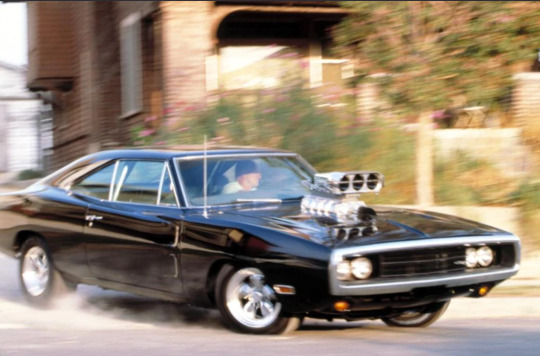
A human being can be a 1970 Dodge Charger R/T and not know how to keep it on the road.
Personal opinion: from an evaluation standpoint, give me the Charger that doesn’t know how to stay on the road over the Prius that you can drive with your knees.
Pause.
I understand that development environments and athlete motivations play a crucial role in ever getting that Charger to stay between the lines. Pull the right strings and that Charger will make adjustments and soar to heights that the Prius could never dream of.
Unpause.
A Sliding Scale
It is important to consider frame size when evaluating raw athleticism. When it comes to baseball, the physical tools are largely affected by what’s under the hood, but frame size also plays a role. For this reason, I’ve put together a bit of a sliding scale cheat-sheet of where to look for impact tools:
Use the following for frame size reference:
Small = ~5-10, 175 lbs.
Average = ~6-0, 190 lbs.
Large = ~6-3, 220 lbs.
Extra Large = ~6-5, 250 lbs.

Conveniently, the Loden Score System is on a 0-12 scale that perfectly parallels a 20-80 scale. So, to translate: 0 = 20, 1 = 25, 2 = 30 … 11 = 75, 12 = 80.
To oversimplify the above / provide an example: if you’re looking at a 5-11, 180 lb. player and they don’t look to be getting any bigger, don’t expect impact physical tools unless they’re at least a 65 raw athlete.
A lot of raw athleticism is genetic, but at the same time, a lot of the physical qualities to build a robust engine (raw athleticism) can be trained as the athlete physically matures. To paraphrase the AFC Ajax Youth Development Model:
You can take a Fiat and turn it into an Audi, you can take an Audi and turn it into a Ferrari, but you can’t take a Fiat and turn it into a Ferrari.
And you certainly can’t make any transformation at all if you aren’t dedicating time away from competing in your sport as you physically mature.
From what I’ve observed, the current amateur sports environment places a disproportionate amount of emphasis on competing. So, most kids are relying solely on their genetic lottery for what kind of motor they’re running under the hood. The few that swim against the current – by the direction of parents or coaches who aren’t afraid to be different – and make training a priority during their developmental window, have a chance to enhance their motor in a meaningful way.
DM Me.
Anyone who is interested in hearing more or having a discussion on the topic, don’t hesitate to reach out on Twitter.
0 notes
Text
An Ode to Late-Bloomers

Late-bloomers don’t just exist – they are abundant. They are the essence of the phrase that many acknowledge (and only some truly believe): development is non-linear. Some kids are big, strong, and fast at 15-years-old, others are small and wiry, others still are uncoordinated, disproportioned, and slow – but what will they be when all is said and done? In this blog, I have called out a handful of professional athletes that I would define as late physical developers.
Late Physical Developers – athletes who are late to the party in some combination of size, speed, and strength.
In addition to the late physical developers, there is a second category of late-blooming professional athletes that I would define as late optimizers.
Late Optimizers – athletes whose potential was unlocked after their physical development peaked by either a skill-based adjustment or a strategic-usage adjustment.
Late optimizers have become quite popular in baseball with a number of private- and affiliated-specialized coaches tapping into everything from movement-inefficiencies to using technology to provide feedback for skill development.
A second lens of late optimizers is strategic-usage (think Bill Belichick). Find what the athlete does well and maximize it (as opposed to forcing the square peg into the round hole).
This is a reminder that not every impact-professional athlete walked into the gym as a freshman in high school (and some, not even in college) and said “here I am,” with their aesthetic physical gifts or skill.
This is an ode to late-bloomers.
Late Physical Developers
Aaron Rodgers - QB - Green Bay Packers

Aaron Rodgers was 5’3” as a freshman at Pleasant Valley High School in Chico, California. After receiving no Division I offers out of high school, he attended Butte Community College before transferring to the University of California, Berkeley and becoming a first round NFL Draft Pick a few years later.
Josh Allen - QB - Buffalo Bills
Josh Allen grew up in a small town in northern California and banged the doors down to play at Fresno State, but they didn’t want the then-6’3”, 180 lb. quarterback – nor did any other Division I school. After a year at Reedley College, Allen was 6’5” and 240 lbs. – he received one Division I offer and it was from Wyoming.

Allen became the seventh overall pick in 2018 NFL Draft and in 2020, led the Buffalo Bills to a 13-3 season and a trip to the AFC Championship game. He has taken the Bills to the playoffs in his only two seasons as a starter in the NFL.
Anthony Davis - PF - Los Angeles Lakers
As a freshman in high school, Anthony Davis was a 6’ guard and it wasn’t until his senior year that he shot up from 6’4” to 6’10” and became the most highly sought-after recruit in the country:
“Anthony Davis went from non-top-100 player to the top player in the country in a span of five or six weeks” - Dave Telep (ESPN Recruiting Analyst)
Prior to his late-height addition, Davis had one Division I offer and it was from Cleveland State.

Davis is 28-years-old, an 8-time All Star, 4-time All-NBA, and 2020 NBA Champion.
Scottie Pippen - SF - Chicago Bulls
This one is mind-boggling to me. Scottie Pippen was a 6’2” equipment manager as a freshman in college at the University of Central Arkansas. After a handful of scholarship players fell-off, Pippen was given a chance to play and he came back for the start of his sophomore year at 6’7.”

Not that it needs mentioning, but just a reminder that Scottie Pippen won 6 NBA Championships with Michael Jordan and 2 Olympic Gold Medals.
Kyle Dugger - S - New England Patriots
Kyle Dugger was selected with the 37th pick of the second round of the 2020 NFL Draft by the New England Patriots out of Division II, Lenoir-Rhyne in North Carolina. He was the highest selection of only three, non-Division I draft picks in the 2020 NFL Draft – which begs the question, why did New England take him so high? And if he’s that good, why was he playing DII? Dugger was a late physical developer. Per an article by Jeff Howe in The Athletic from April 2020:
Dugger dabbled in [football and basketball] and was ultimately first-team all-county as Whitewater High’s point guard as a senior. It was hardly that easy for him in football, though, as he showed up to the freshman team at about 5-foot-7 and 140 pounds soaking wet, according to assistant coach Wes Hardin. Dugger split time between cornerback and running back. He didn’t get called up to varsity until his junior year and finally became a full-time starter at corner and wide receiver as a senior, when he was still maybe 5-foot-11 and 170 pounds.

Once at Lenoir-Rhyne, Dugger continued to grow into the 6-2, 220 lb. frame that we now see in New England. In his first NFL season, he saw action in 14 games and collected 64 tackles – good for fifth best on the team.
Late Optimizers
Blake Treinen - RP - Los Angeles Dodgers
This story may take the cake. So make sure you follow this link and give it a read. Blake Treinen pitched on the junior varsity team at NAIA Baker College. At the time he was throwing 82-85mph. He got with the right coach (Justin Wichert) who was able to tap into his size and athleticism and he ended up at South Dakota State where he pitched around 90mph. After his senior year, he signed with the Oakland Athletics.

In 2018, Treinen broke out when he went 9-2 with 38 saves out of the A’s bullpen and struck out 100 in 80.1 innings with a 0.78 ERA. Treinen was a key member of the 2020 World Series Champion, Los Angeles Dodgers bullpen and will open up the 2021 MLB season in a similar role. He regularly pitches at 96-98mph.
Josh James - SP - Houston Astros
Probably one of the lesser-known athletes in this post, Josh James pitches for the Houston Astros. Shout out to Eric Peterson for the call-out on this one. James struggled with sleep apnea at the onset of his career – and as we know, sleep is vital to performance. After a teammate pointed out his snoring, James sought a sleep specialist and his career took off:
The effects on James' career began blossoming this season. He went from sitting at 91-94 mph with his fastball, occasionally hitting 95, to touching 100 mph, to go along with a good slider and changeup. A beast was unleashed.

As of the start of the end of 2021 MLB Spring Training, James is competing for a spot in the Astros rotation.
James White - RB - New England Patriots
In 52 games at the University of Wisconsin, James White caught 73 passes for 670 yards and 3 touchdowns – not too shabby for a running back. In his first 33 games in the NFL, White caught 105 passes for 984 yards and 9 touchdowns and receiving-usage has only increased from there. Through the 2020 NFL season, White is averaging 4.1 receptions per game vs. in college where he averaged 1.4 receptions per game.

In Super Bowl LI, White was the Patriots leading receiver (14 catches) and caught the game-ending score in overtime. 7 years into his career, he is one of the most trusted backfield receivers in the game and has been a key-contributor on two Super Bowl champion teams. The Patriots identified something that White was good at and strategically-optimized it.
Sonny Gray - SP - Cincinnati Reds
At the end of the 2015 season, Sonny Gray was a 25-year-old, right-handed starter for the Oakland Athletics and had just secured a third-place finish in the Cy Young Award race with a 14-7 record and a 2.73 ERA. From there, he went 15-23 in parts of two seasons with Oakland and the New York Yankees. In 2018, he pitched to an 11-9 record with a 4.90 ERA before the Yankees traded him to the Cincinnati Reds in the offseason. It was prior to his 2019 season, in a technologically-aided development session with his college pitching coach that he learned that he needed to throw his curveball more and his slider less.

Sonny went 11-8 with a 2.87 ERA while striking out 205 batters in 175.1 innings – the first time he ever struck out more batters than innings pitched in his career. For the first time since 2015, he finished top-10 in the Cy Young Award race and appeared in the MLB All Star Game. Sonny identified something that he was good at and strategically-optimized it.
Conclusion
Advice to athletes: be patient with your physical development and seek areas for improvement. If what you have been doing for an extended period of time is not working, just remember what Albert Einstein may or may not have said (disputed apparently):
The definition of insanity is doing the same thing over and over again and expecting a different result.
Moral of the story: every athlete is different and development is non-linear. Don’t compare yourself to others – just do your best to be a better version of yourself today than you were yesterday.
1 note
·
View note
Text
Circadian Rhythms: Timing Peak Performance
What is known
It has been observed that reaction times are slower and performance outputs are less, first thing in the morning, as opposed to the late afternoon, in human beings with a consistent circadian rhythm, (Manfredini, et. al). Simply put, time of day can impact performance.

In understanding this, I set out to complete a 12-day performance observation of reaction tests and a CMJ (3, rapid vertical jumps) test in the MicroGate OptoJump system to see if I would observe something similar.
Process
Each day during the 12-day period, I completed a four assessment, performance evaluation at 8:30am and 4:00pm. These assessments were identical in nature. Results of the assessments were recorded and tracked over the 12-day period.
Prior to each assessment, I completed a standardized warm-up consisting of a slant board dorsiflexion gastrocnemius stretch (30 seconds each leg) and soleus stretch (30 seconds each leg), soft tissue work on the bottom of both feet (30 seconds each foot), a static hip flexor stretch (15 seconds each flexor), and a set of 6 body-weight squats.
After completing the standardized warm-up, I weighed-in, recorded sleep observations, and then completed a CMJ test, a visual reaction jump test, an acoustic reaction jump test, and 5 fast hands reaction tests using MicroGate equipment.
Diet, sleep, and physical activity were regulated in advance of the observation period and consistent throughout. I completed the procedure 24 times over the course of 12 days.
The Evaluation
CMJ – a vertical jump assessment where the athlete jumps as high as they can as quickly as they can, three times. This assessment is used to evaluate power and explosivity.

Visual Reaction – an assessment where an athlete jumps as high as they can from a loaded stance (knees in slight flexion and arms ready to swing) in which the athlete reacts to a visual stimulus. Reaction time and jump height is recorded. The athlete does this three times.
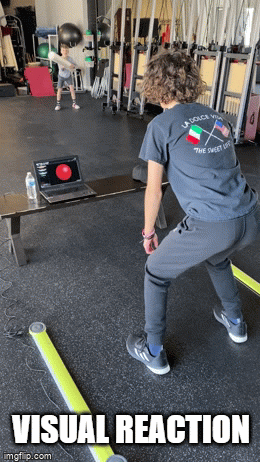
Acoustic Reaction – a similar assessment to the visual reaction assessment, except the athlete is reacting to a sound instead of a visual stimulus. Reaction time and jump height is recorded.
Fast Hands – a cognitive assessment where an athlete has to identify and trigger 10, green 3’s on Witty Sems from a random selection of 4 green numbers as fast as they can. The total time elapsed from the athlete triggering the first green 3 to the tenth green 3 is recorded.

The Metrics
CMJ GCT Average – the average of the 3 ground contact times for the CMJ assessment for all sessions.
CMJ Height Average – the average of the 3 jump heights for the CMJ assessment for all sessions.
CMJ Power Average – the average of the 3 power quotients for the CMJ assessment for all sessions. This is a measure of power.
CMJ RSI – the average of the 3 flight times divided by the average of the 3 ground contact times for the CMJ assessment for all sessions. This is a measure of reactive strength (quickness).
Visual Reaction Best – the average of the best visual reaction times for each session. Each session included 3 trials of the visual reaction assessment. The best of the 3 trials from each AM and each PM session were averaged together for this analysis.
Acoustic Reaction Best – the average of the best acoustic reaction times for each session. Each session included 3 trials of the acoustic reaction assessment. The best of the 3 trials from each AM and each PM session were averaged together for this analysis.
Fast Hands Best – the average of the best fast hands times for each session. Each session included 5 trials of the fast hands assessment. The best of the 5 trials from each AM and each PM session were averaged together for this analysis.
Analysis
After a 12-day period in which I slept between 8-9 hours regularly every night and maintained regular food and exercise habits, I observed a significant difference in physical and cognitive performance from the 8:30am (AM) performance evaluation to the 4:00pm (PM) performance evaluation.
As expected, the PM sessions showed decreases in ground contact times and increases in average jump heights, power, and reactive strength on the CMJ assessment. Additionally, visual and acoustic reaction times were significantly better during the PM sessions. Finally, fast hands visual reaction times were better during the PM sessions.
Physical Performance Observations
For average ground contact time, PM session times (.224 sec) were .021 sec better than AM session times (.245 sec), on average. The difference between the PM and AM session accounts for a roughly 10% quicker average ground contact time for this assessment.
For average jump height, PM session jump heights (10.25 inches) were .79 inches better than AM session jump heights (9.46 inches), on average. The difference between the PM and AM session accounts for a roughly 8% higher jump, on average, for this assessment.
For average jump power, PM session jump power (43.58) was 1.81 points better than the AM session jump power (41.77), on average. The difference between the PM and AM session accounts for a roughly 4% higher jump power number, on average, for this assessment.
For average jump RSI, PM session RSI (2.07) was .25 points better than the AM session RSI (1.82), on average. The difference between the PM and AM session accounts for a roughly 12% higher RSI, on average, for this assessment.

Cognitive Performance Observations
For the average best visual reaction times (VIS REACTION BEST), PM session times (.688 sec) were .022 sec better than AM session times (.709 sec), on average. The difference between the PM and AM session accounts for a roughly 3% quicker average best visual reaction time for this assessment.
For the average best acoustic reaction times (ACOUS REACTION BEST), PM session times (1.306 sec) were .037 sec better than AM session times (1.343 sec), on average. The difference between the PM and AM session accounts for a roughly 3% quicker average best acoustic reaction time for this assessment.
For the average best fast hands times (FAST HANDS BEST), the average best PM session time (5.53 sec) was .35 sec better than the average best AM session time (5.88 sec), on average. The difference between the PM and AM session accounts for a roughly 6% quicker average best visual reaction time for this assessment.

Conclusion
The 12-day observation period encompassed 24 identical evaluations: 12 completed every morning at 8:30am and 12 completed every afternoon at 4:30pm. I found that jump assessment performance was significantly better in the afternoon vs. the morning and that visual and acoustic reaction assessment performance was better in the afternoon vs. the morning as well.
For the athlete reading this – whether you are a weekend warrior, someone who gets paid to play in the tv league, or anywhere in between – if you are looking to get the most out of your training:
Make sure you are getting regular sleep (roughly same time to sleep and wake) – at least 8 hours.
Train during or around the hours when your body is at its physical and cognitive peak (late afternoon to early evening). This will be much more effective if you are doing a good job with number 1.
While this is an observation of one person, it supports previous research that has shown peak performance, both physically and cognitively, occurs in the late afternoon. This observation opens the door for a study with a larger group.
Suggested Reading
Circadian rhythms, athletic performance, and jet lag (1998) – Roberto Manfredini, Et al.
0 notes
Text
Get Your 8: The Importance of Sleep
Sleep is foundational for health and well-being. You may have heard this before, but it may not have resonated. If it hasn’t resonated up to this point, figure it out – and no, 6 hours doesn’t cut it. For every night that you don’t get at least 8 hours of sleep, consider yourself well behind the 8 ball before your day even begins.
Importance of Consistent Sleep and Hacking Your Circadian Rhythm
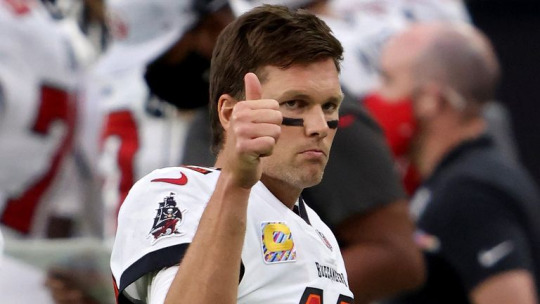
What is a circadian rhythm? We all have one – it is your biological clock. It tells your body when to wake up and when to go to sleep. But beyond that, your body is cycling everyday while awake. That is why consistent sleep is important. When your sleep is consistent, your body cycles regularly – meaning there is predictability to it. Whether you believe in the 43-year-old quarterback or not, Tom Brady has paid special attention to sleeping and waking at the same time every day. Maybe you should try it.

So, when attaining consistent sleep, what should I do to “hack” my circadian rhythm? To simplify, a consistent rhythm will yield peaks in short-term memory recall in the morning, long-term memory recall is much greater when new material is presented in the mid-to-late afternoon (as opposed to the morning), and for anyone who physically exerts themselves (should be all of us), late afternoon to early evening is when to expect peak physical performance (strength, reaction time, etc.), (Manfredini).
NREM and REM Sleep
We’ve introduced the benefits of regular sleep on maximizing your waking time, but what happens when you sleep? What is the sleep cycle and what is the difference between NREM sleep and REM sleep?
Sleep Cycle: the sleep cycle lasts right around 90 minutes and each additional cycle is not identical to the previous. The cycles right after falling asleep have longer periods of NREM sleep. The cycles closest to wake have the longest periods of REM sleep, (Walker 43).
NREM Sleep: NREM sleep is critical to the storing and strengthening of new facts and skills learned while awake. Think of NREM sleep as the processing of new memories, (Walker 53).
REM Sleep: REM sleep occurs after NREM sleep and is critical for fusing the old with the new. REM sleep connects all of those newly processed memories, facts, and skills to everything else you’ve ever experienced or learned, (Walker 53).
To put it succinctly, NREM and REM sleep are equally important. To reiterate, the cycle closest to wake has the longest period of REM sleep. Without a full 8 hours, you are cutting off the highest volume of REM sleep that is responsible for connecting all of that new information that you learned over the course of your last 16 hours awake. Why learn it if you’re not going to remember it?
More on REM Sleep
In addition to connecting information in our brains, REM sleep has been found to be critical to emotional intelligence (being able to regulate our emotions in our human interactions). Another powerful benefit of REM sleep is the impact it has on ideation and creativity. REM sleep connects new information with the old information – linking ideas together that may have not previously been linked while awake. Problem-solving and original ideas can largely be attributed to REM sleep, (Walker 74-75).
Importance of Sleep in Skill Acquisition

The brain continues to learn new skills even when the body isn’t physically practicing them. What? It has been proven (in musicians) that an 8-hour period of sleep between practice of a new skill significantly speeds up the process of mastering it. Whereas something learned in the morning and revisited in the evening did not see the same performance bump. Sleep is essential to mastery of new skills. Furthermore, the specific sleep responsible for the mastery of new skills is directly linked to NREM sleep in the last 2 hours of an 8-hour period of sleep, (Walker 127).
Sleep Loss and Sports Injury
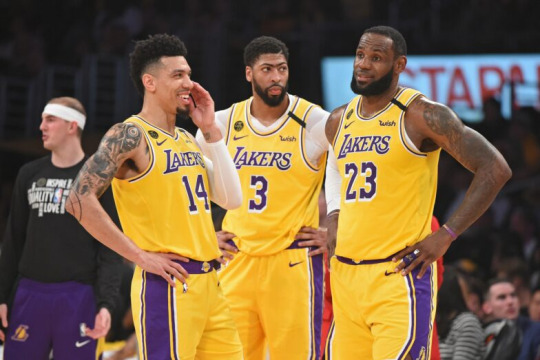
“[LeBron’s] attention to detail is off the charts. To every series, every game. He’s locked in as soon as he steps into the arena. Taking care of his body. He sleeps more than anybody I know,” - [Anthony] Davis during 2020 postseason.
For all of the athletes out there – professional, amateur, youth – anything less than 8 hours of sleep will result in getting tired faster (both in displays of strength and speed), lesser peaks in strength and speed, and even a lesser ability for the body to cool itself during training or competition, (Walker 129). A study has shown that youth athletes that sleep less are at a greater risk of injury than those who get at least 8 hours of sleep every night, (Milewski).
Maybe that is why Tom Brady, LeBron James, Justin Verlander and Alex Bregman are all getting at least 8 hours every night …
Caffeine

Ahhhh caffeine … the stuff that makes you feel awake.
What actually happens when we consume caffeine?
Caffeine blocks our adenosine receptors.
What are adenosine receptors?
Adenosine is what makes us feel tired. When we consume caffeine, we block the ability to feel tired. It doesn’t mean that the feeling goes away, we just essentially numb it as our tiredness grows stronger underneath the caffeine block (hence why we crash when the caffeine wears off).
How long does caffeine block our feeling of tiredness?
While caffeine peaks 30 minutes after intake, it acts as a blocker for our adenosine receptors for more than 5-7 hours (and this length of time increases with age).
So, when is it okay to have caffeine?
Probably in moderation in the morning. Any afternoon caffeine will likely disrupt your ability to fall asleep and get your needed 8 hours, (Walker 27).
In Summary
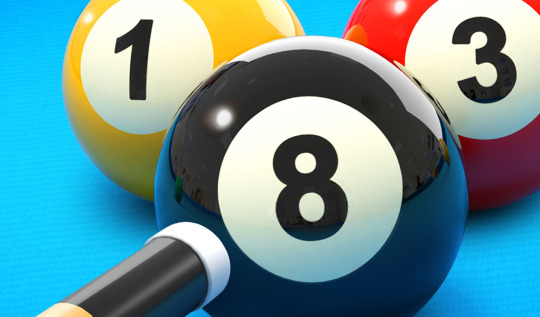
The last 2 hours of an 8-hour sleep are responsible for the longest period of REM sleep we experience during an 8-hour sleep. REM sleep is responsible for connecting new information with old, emotional intelligence, and creativity and problem-solving. Additionally, NREM sleep during the last 2 hours of an 8-hour sleep is responsible for helping us master new skills.
Anyone who is cutting their sleep short of 8 hours on a regular basis is only putting themselves at a disadvantage. You are not superhuman, you are not the exception, you also need 8 hours of sleep every night. Don’t cheat yourself, a lot of people do – for a performance athlete looking for every advantage to get ahead of their competition … for an artist looking for a new ground-breaking idea … for the student looking to retain information for their exam (and future practical application in their field of study) …
Get your 8.
Suggested Reading
Chronic lack of sleep is associated with increased sports injuries in adolescent athletes (2014) – Matthew Milewski, Et al.
Circadian rhythms, athletic performance, and jet lag (1998) – Roberto Manfredini, Et al.
Why We Sleep: Unlocking the Power of Sleep and Dreams (2017) – Matthew Walker, PhD
0 notes
Text
Nutrition: Exploring Food Sensitivity
Overview
I’ll just start by saying that I’m not a nutritionist, however, the experience that I will share will have takeaways that you can hopefully use to keep your body feeling good.
Back in May, I visited a doctor who ran a quick food sensitivity (food-allergy) check on me. A friend of mine had recently retooled his fridge by removing certain foods from his diet that he had sensitivities to, per the check, and noticed a drop in weight (as a result of reduced inflammation), stable digestion, and an increase in general well-being and energy. I didn’t seek this check, however, I was curious based on his feedback and was presented with the opportunity, so despite not having any glaring issues, I went down the rabbit hole.
Initial Evaluation
After about 5 minutes, the doctor had given me a laundry list of foods to avoid because I may have sensitivities. Now, again, my body didn’t present any glaring issues and at the time I subjectively reported feeling good. So, when the doctor told me that I should try and avoid dairy (which I had largely cut out anyway), chocolate, peanuts, cashews, seeds, gluten, chicken, oranges, corn, and eggs, I was heavily skeptical.
I had replaced dairy chocolate milk with chocolate-almond-cashew milk about two years ago and I drank that regularly. Both cashew and chocolate came up as potential sensitivities. Was it not enough to cut back on the dairy? I ate a lot of eggs and eggs are an ingredient in a lot of things I eat. So, no more eggs? Come on, chicken? I don’t eat it all the time, but I love fried chicken, and what about grilled chicken thighs? I’ve always been told chicken breast is one of the best lean proteins for you. Well, apparently not for me?

I made the decision that I would do my best to avoid the foods that came back with potential sensitivities for a 2-week period. I would say that I was at least 90% compliant and any of the 10% that wasn’t compliant was a result of a small-trace of a food item that was used as an ingredient in something I ate.
What did I eat for 2 weeks?
The first trip to the grocery store was a long and frustrating one. Finding an attractive gluten-free bread isn’t easy. Finding an attractive gluten-free bread that wasn’t made with egg is near-impossible. I arrived at a gluten-free cinnamon-raisin swirl bread (it actually wasn’t half bad). I also found that many of the foods I was targeting for healthy snacking were made with sunflower seed oil (seeds came up as a sensitivity).
Ultimately, your best bet for snacking with heavy-restrictions is food that doesn’t have a ton of ingredients. For me that was a homemade trail-mix with lightly-salted almonds, raw walnuts, dried cherries and honey-roasted pistachios. Lara bars were a necessary discovery (most are made with 4-7 ingredients only). Peaches and cherries are in season. Green pea snack crisps are inexpensive, made with only 6 ingredients (and you can pronounce them all), and the cracked and spicy black pepper ones play well with an almond butter, pecan, and honey sandwich on the aforementioned gluten-free cinnamon-raisin swirl bread.

A steak prepared with onions and cilantro, a side of tomatoes w/ balsamic vinegar, and a sweet potato w/ pecans and honey. 10 total ingredients on this plate.
When it came to meals, I could still work with steak, pork, fish, rice, sweet potatoes, and avocados. In tandem, there were plenty of onions and peppers chopped, tomato, brussels sprouts (I did not know there was a third ‘s’ in brussels before spellcheck), and of course, cauliflower.
Unfortunately, no non-dairy ice cream made the okay list, so I pivoted to frozen fruit bars (also very few ingredients) for dessert.
Results
The first result was weight-related and as it was explained to me, foods that you have sensitivities to create inflammation in your body (add weight). It shocked me none to see the volatility in both directions during and after the two-week period.
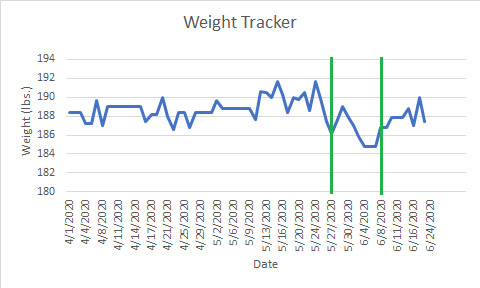
The green lines represent the start and finish of the 2 week ‘food evasion’ period.
After two weeks of the great food evasion of 2020, I was down 2.6 lbs. (without modifying my physical fitness or sleep patterns). Mind you, I had monitored my weight on daily basis for 2 months prior to this and had weighed in consistently between 188 and 192 for at least a month. I broke the two-week evasion with a pizza, because I love pizza, and weighed in 2 lbs. heavier the next day. Over the course of the next week, I became less rigid with what was going in the fridge and in my body and one week after breaking the two-week evasion, I was up 4 lbs. from the two-week low (also, without modifying my physical fitness or sleep patterns).
The second result was digestion-related and is what made me a believer. Regular digestion came within a few days and at no point over the two-week period was my stomach upset in any way. There’s a difference between the “my body is feeling good,” I subjectively expressed prior to avoiding the laundry list of foods and the “my body is actually feeling good,” that I can say with confidence was a result of avoiding the said foods.
Pulse Test
The doctor provided me with an at-home, easy to execute food sensitivity test (if you’re ever curious).
The crux of it is that you take your resting pulse (how many beats in 1 minute) with nothing in your system (I opted to do all food sensitivity testing prior to my first meal of the day). Once you are confident in your resting pulse. Put the food item that you want to test in your mouth for 30 seconds and make sure it covers all tastes buds – do not swallow the food item – this is your body’s opportunity to gather all the information it needs on the food item (a significant increase in pulse is your body’s way of preparing to defend the fort). After 30 seconds, keep the food item in your mouth without swallowing and take your pulse for another minute – record your pulse now and note any difference. If you intend to test another food item, do not swallow the food item, if you do not intend to test another food item, it doesn’t matter. Per the above linked article, an increase of 3-4 bpm confirms a food sensitivity. The higher the increase, the more severe the sensitivity. Results from 7 food sensitivity pulse tests below:
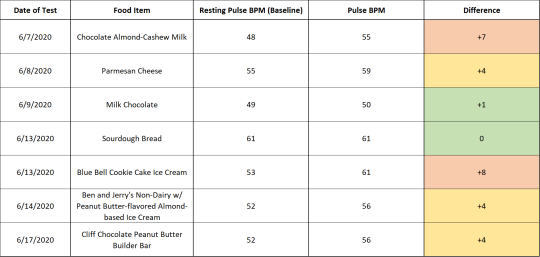
Elimination and Moderation
Keep in mind that the following notes and explanations behind them are my own interpretations and not those of a licensed professional.
The combination of the Chocolate Almond-Cashew Milk test and the Milk Chocolate test results revealed to me that the cashew was likely the cause for the pulse spike. As such, I have decided to avoid cashews moving forward. Chocolate did not seem to have much of an effect at all on my pulse, so I will continue to enjoy in moderation.
Parmesan Cheese came back with a +4, so there was a sensitivity to dairy. I had largely removed dairy from my diet anyway, but because the sensitivity is on the milder side, I won’t feel bad about enjoying a pizza from time to time.
My primary bread of choice for quite some time has been sourdough, and that’s mostly because I enjoy the taste – also turns out, it is lower in gluten and easier to digest – who knew? I was pleased to find that my Sourdough Bread test came back with no change in pulse rate. Since that test, I have reintroduced sourdough bread into my weekly rotation.
The Blue Bell Cookie Cake Ice Cream test is the one that is most interesting and unfortunate. Looking at the ingredients list, it shocks me none that I saw a +8 spike in pulse after testing this food. This was one of my favorite ice creams, and after the two-week food evasion, I decided to follow the test with a full bowl. Keep in mind that this half-gallon was half-empty prior to the two-week period, so I had already consumed part of the container. After I ate the bowl, I experienced an upset stomach – a reaction that I had never had previously (both with this particular container and with multiple past half-gallons). After essentially cleansing my body for two weeks, I think that was its way of telling me that it would prefer if I didn’t go back to eating Blue Bell Cookie Cake Ice Cream. Dairy ice cream as a whole will be an infrequent treat for me moving forward, fortunately, there are plenty of non-dairy ice creams out there (that are starting to taste just as good).

Milk, cream, wheat flour, milkfat, butter, eggs, skim milk, high fructose corn syrup, and corn syrup were all identified food-sensitivities for me + the things I can’t pronounce can’t be good for me + what is a natural flavor anyway? Do those grow on trees somewhere?
The last two food tests that I recorded both involved peanut butter as the primary identified-food sensitivity. Both an almond milk-based, peanut butter-flavored Ben and Jerry’s ice cream and a Clif Chocolate Peanut Butter Builder Bar yielded a +4 jump in pulse. From this, I have decided to moderate any use of peanuts or peanut butter and substitute where possible (almond butter has become a new mainstay for me).
I haven’t tested corn, oranges, egg or chicken yet in isolation, though, it hasn’t been entirely difficult to avoid these foods. I do plan to test them, but I have already mentally decided to move forward in moderation with these food items.
It is worth noting that concentration of a food item likely impacts the effect it may have on your body. Eating an egg and eating something made with egg are likely two different things – I would guess that it’s akin to taking a straight shot of alcohol vs. having a mixed drink.
An Aside on Salt
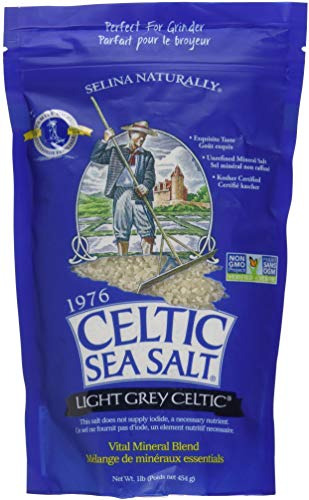
I, like many of you (I’m guessing), have been under the belief that salt is no good for you. As an aside, a conversation I had with the doctor yielded a new lease on salt. It turns out that table salt is the salt that spikes sodium levels and has been attributed to heart-issues (think salt-shakers/salt-packets at restaurants and the stuff fast food restaurants use). My understanding now is that table salt is boiled at a high temperature and stripped of a TON of minerals that are good for you in the process. The good news is that the salt that isn’t bad for your heart and still has all of the minerals is available at your grocery store. Grey Celtic Sea Salt is my new salt of choice, but here is an article on other salts you should look into / use at-will and without fear.
Closing Thoughts
Fortunately, I’ve never needed or explored a popular diet – I know Paleo and Keto have emerged as popular diets in the past few years and obviously, vegetarians and vegans have been preaching largely plant-based diets for a long time. Those diets are one-size fits all, and that’s not how we’re wired – there’s no magic bullet for everyone. The human body is complex and individual to you and that is probably what the past month or so has opened my eyes to the most.
I must make clear that none of the identified food sensitivities were affecting my quality of life. With the knowledge gained, application and observation, I have decided to make some adjustments moving forward.
Objectively, I just want to feel good with regularity. If that means I have to stop eating certain foods and moderate other foods, I’m willing to do that. I would urge anyone at any age to explore what they are putting in their body and how it may be impacting their sleep, energy, and general well-being.
Food is joy and health is wealth – so find a way to enjoy food that keeps you healthy. Your health is your long-term freedom.
0 notes
Text
Baseball5 as a Donorsport for Baseball/Softball
At this point, the concept of a donorsport and how it can be used to develop basic movement skills for an athlete’s primary sport is a frequented topic and exploration for this blog. Looking beyond the array of traditional sports, there is a new sport gaining international popularity that was announced in 2017 by the World Baseball Softball Confederation (WBSC), Baseball5. This sport is already being played everywhere from Colombia to France to Palestine. For this blog, we will introduce Baseball5, its inclusive nature, and its potential role in the development of youth baseball and softball players.
youtube
What is Baseball5?
A good place to start in answering the question, ‘what is Baseball5?’ is with the description provided by WBSC President, Riccardo Fraccari:
“Baseball5 is a new five-on-five, five-inning street version of the game of Baseball/Softball that can be played anywhere. This faster urban discipline will help drive baseball and softball to new places not possible before.” - WBSC President - Riccardo Fraccari
Baseball and softball fields take up a lot of space. Both baseball and softball take a long time to play. Baseball and softball require 18 players. Baseball and softball require bats, cleats, helmets, gloves, catchers gear, and multiple baseballs/softballs.

Baseball5 can fit into a public park, gymnasium, or a parking lot. A game of Baseball5 can be completed, start-to-finish in under 30 minutes. Baseball5 requires 10 players. Baseball5 requires only a ball.
While Baseball5 has a chance to be a great way to reach new people that baseball and softball would have a much harder time getting to, it can also serve to integrate into youth baseball and softball development.
How can Baseball5 be integrated in youth baseball and softball development?
As previously mentioned in a post about dodgeball, it is a struggle to maintain the focus and excitement of kids for baseball and softball because they require a relatively high-level of technical skill to enjoy (at any level).
So, similar to the recommendation with dodgeball, we can introduce Baseball5 as a way to be productive in improving baseball and softball skill and keep everyone engaged and having a positive experience in youth baseball and softball settings.
Baseball5 is fast-paced, fun, and can be set up almost anywhere. Bonus, very little equipment is needed and often times a game lasts under a half of an hour.
Below are ten transfers (there are more) between Baseball5 and baseball/softball and an argument for why the new sport is a fitting implement into baseball and softball practice at the youth level:
Sequencing (Hitting + Pitching)
While there is no opportunity to swing a bat or deliver a pitch in Baseball5, the sequence of the self-tossed hit is similar to both hitting and pitching in that it requires a load of the scap and back hip, a rotational energy transfer, and a strong front leg-block. In terms of learning the sequence of efficient power load and transfer, hitting in Baseball5 probably does a pretty good job translating to similar movements in baseball and softball.

Lateral Agility
The lateral agility required to field a ball in Baseball5 is very similar to the lateral agility required to field a groundball in baseball or softball.

Fielding
This transfer may be the strongest as a quick catch and release is required in Baseball5 as the dimensions of the field are so tight. Teaching quick and efficient hands will translate to infield play in baseball and softball.

Throwing
Much of the throwing that occurs in Baseball5 is a quick release type of throw due to the time constraints put upon the fielder as a result of shorter distances between bases. As a result, Baseball5 will likely create a plethora of opportunity to explore quick flips and different arm slots out of necessity. Throwing in Baseball5 should help infielders develop adjustability and dexterity that they can take with them to the full-sized diamond.

Catching
Catching without a glove is much more difficult than catching with a glove. A result of no gloves in Baseball5 should be softer hands and greater hand dexterity in catching. This is another obvious transfer for baseball and softball.

Turning
The use of turning in Baseball5 is very similar to baseball and softball. Many angles are the same on a Baseball5 field compared to a regulation baseball or softball field (albeit on a smaller scale). Control of quick-turning and proprioceptive ability are keys to making outs on a Baseball5 field.
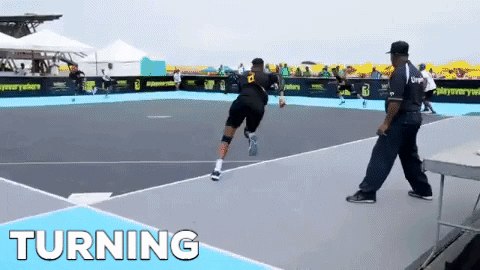
Coupling
Coupling is a necessity in all sports, some notable examples in Baseball5 that transfer to baseball and softball are catching and throwing, diving and catching, running and throwing, and turning and throwing. Coupling is anytime that two basic movement skills occur in rapid succession.

Kinetic Differentiation
Kinetic differentiation is when an athlete has to track an object at different depths and speeds. Kinetic differentiation is important in hitting (of course), but it mainly shows up in fielding in Baseball5, similar to how it would on a baseball field. Fielders in Baseball5 have to adjust their approach depending on how hard a ball is hit and how it is approaching – no different than a defender in baseball or softball.

Reaction
Reaction is the name of the game in Baseball5 … and in baseball ... and in softball … and in all sports. The brain is so important to setting the body in motion. Baseball5 creates many opportunities for unique reactions to how a ball is put in play. Reaction in Baseball5 will transfer not just to baseball and softball, but again, to all sports.

Conclusion
While Baseball5 will never be able to develop hitting live-pitching or throwing with intent, it can be a fun, competitive activity to include in youth baseball or softball practice to work on hands, footwork, and a number of other baseball/softball-specific skills and coordinative abilities.
Suggested Reading
WBSC Baseball5 Official Rulebook (2019)
The Athletic Skills Model (2017) - Rene Wormhoudt, Geert J.P. Savelsbergh, Jan Willem Teunissen, and Keith Davids
0 notes
Text
Dodgeball as a Donorsport for Baseball
In a past blog, we discussed the concept of a donorsport and how it can be used to develop basic movement skills for an athlete’s primary sport without the athlete having to play the primary sport year-round. Looking beyond the array of traditional sports, there are a number of gym class activities / games that many kids are familiar with that can act as a donorsport as well.
For this post, we want to focus on dodgeball and why it is a natural fit to act as a donor activity for baseball.
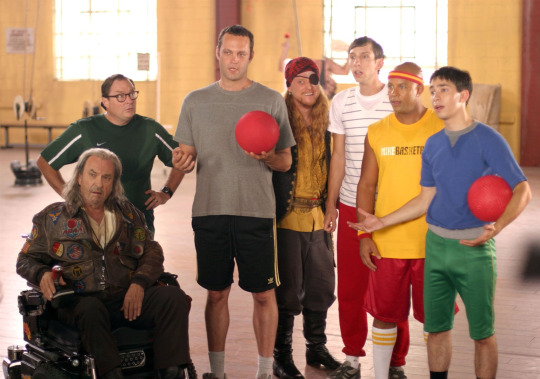
A timeless struggle when dealing with kids and baseball is maintaining their focus and excitement for a sport that requires a relatively high-level of technical skill to enjoy (at any level). In 2020, there are more activities competing for a kid’s attention than ever before, so if they become bored or discouraged with an activity, it is easier now than ever for a kid to switch to something else (I’m looking at the accessibility of video games).
So, it’s hard to keep kids interested / focused / excited for baseball practice (not every kid, but probably the majority of the group you’re working with at the youth level) … how can we be productive in improving baseball skill and keep everyone engaged and having a positive experience? – because good memories at an early age are ultimately what will motivate a kid to stay with a sport when s/he has the choice.
Dodgeball is fast-paced, fun, and can be modified in many different ways and there are many ways to be good at dodgeball. Meaning, the fast kid who can’t catch can find a niche and the slow kid who throws harder than everyone else can find a niche as well.
As the rule maker, certain constraints can be put into place to focus on developing certain skills, for example, if you want to focus on catching, incentivize it:
1. a catch knocks two opponents out of the game and/or
2. if you attempt to catch a ball and you drop it, you stay in the game (have to be hit while attempting to dodge a ball to get out) and/or
3. be creative and adjust to the skill development needs of your group
Below are ten transfers between dodgeball and baseball and an argument for why dodgeball is a fitting implement into amateur baseball practice, specifically at the youth level:
Throwing with Intent
When parents play catch with their kids, they throw soft to their kid (so as to not hurt them if they don’t catch it, obviously), but in doing so, they alter their true throwing motion. Many kids learn by mirroring their parents. So, what is a safe way to teach kids to throw with intent without them getting hurt? Dodgeball! Use foam balls and let em rip – if a kid gets hit in the head, it shouldn’t hurt – and that’s the point.
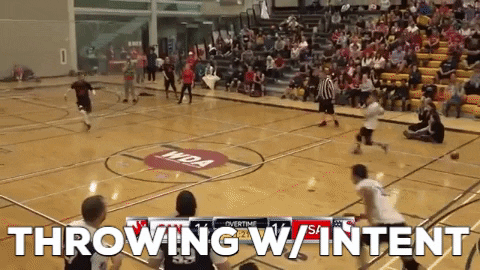
Throwing on the Run
It is important to keep active feet in dodgeball so as to not be an easy target, often times this will warrant throwing on the run. Dodgeball can help develop natural throwing technique and accuracy while the body is in motion (in a number of different directions in relation to the target).

Self-organization + Variety in Throwing Technique
Self-organization is synonymous for creative problem solving. The goal is to create constraints / environments that encourage a high frequency of opportunities to develop a desired technical skill.
Practice should be ‘repetition without repetition’ – Nikolai Bernstein (via The Constraints-Led Approach 44)
For example, a kid can play a two-hour baseball game and not have to throw from a low arm slot. The same kid can play dodgeball for 20 minutes and discover that varying the arm slot can be more effective in certain situations (when certain constraints are present) and then try it out multiple times. The dodgeball game will give the kid more natural, live repetitions to vary the arm slot than the average two-hour baseball game.
Dodgeball will create so many opportunities for exploration and creative problem solving in a low-pressure, competitive environment. As a coach, watch and take notes – if you see that a kid should be varying the arm slot and isn’t making that adaptation, figure out how to get them there without telling them directly.
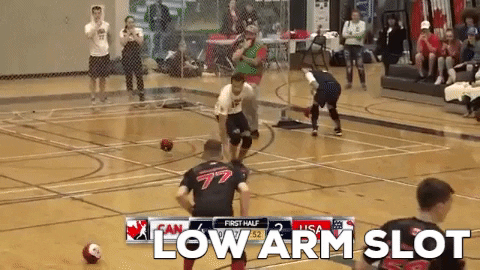
Balance and Dynamic Stability
Balance and dynamic stability are foundational components to every athletic movement and on a baseball field, dynamic stability presents itself on every play from the pitcher to the hitter to the defenders. The importance of balance cannot be understated and with the fast-paced, constant-movement nature of dodgeball, balance and dynamic stability are omnipresent for the duration of game action.

Coupling Ability
Coupling ability is the ability of an athlete to perform multiple movement skills in immediate succession – think synchronicity. Throwing and catching on the run are both examples of coupling ability. As Rene Wormhoudt details in the Athletic Skills Model (125), kids have a sensitive period for developing coupling ability around the ages of 6-8. Create opportunities for coupling and take advantage of the neuroplasticity! Dodgeball is littered with opportunities for the development of coupling abilities.
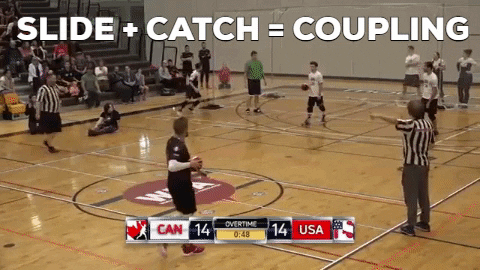
Decision Making
Ah yes, the cognitive component! How important is the brain? Most important. In a fast-paced game like dodgeball, the kids will need to be constantly surveying their environment and making decisions – When should I dive? When should I slide and will it leave me vulnerable? When should I dodge and when should I try and catch? When is the most opportune moment to try and get my opponent out? For however long you play, the young brains will be firing constantly: live action brain training! What do professional athletes at the highest level all have in common? Elite brain speed.
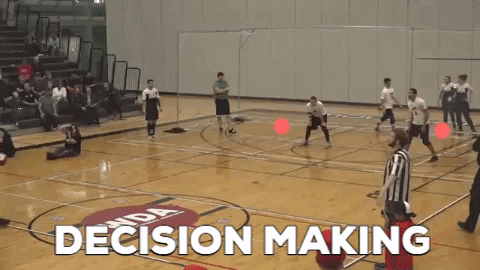
Diving, Jumping and Sliding
There are a number of plays that occur infrequently on a baseball field that involve diving, jumping, or sliding. In a two hour baseball game, your left fielder isn’t promised an opportunity for a diving, jumping, or sliding catch, but in a 20 minute session of dodgeball, that kid could have multiple opportunities to try – and practice – and learn the best way to dive, jump or slide – which, then could translate on the baseball field when the opportunity arises! If kids are able to practice these movements in a live action practice situation, they will have more confidence to attempt the same movements in a live action game.
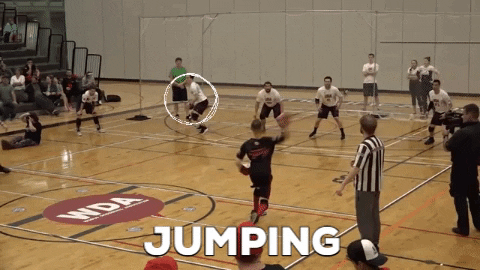
Catching
The great thing about dodgeball is that the balls used are typically foam or rubber and don’t hurt – so when a ball is humming at a kid, it is a lot easier to stand in there and try and catch it, knowing that if it hits them square in the chest, it won’t hurt. This is a transfer to having the confidence to attack a fast-moving ball – just think of every kid that jumps out of the way of hard-hit groundball. Dodgeball creates an abundance of opportunities to track and catch moving objects (ball).
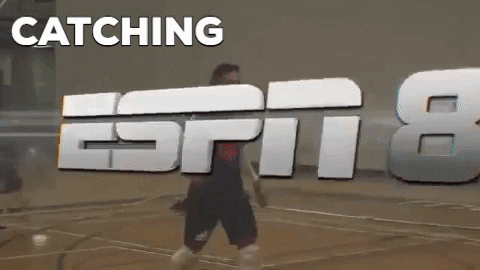
Lateral Movement
Keeping active feet and being able to move quickly side-to-side will allow a dodgeball player to dodge a ball, keep their head up (and vision scanning the game), and be ready to pounce on an opportunity to knock out an off-balance opponent. Lateral movement is an essential skill for a good dodgeball player just as it is an essential skill for a good infielder.

Communicating with Teammates
Communication is critical in all team sports. For example, the pop fly in no man’s land between the 1B, 2B, and RF – who’s ball is it? They need to decide who has the best chance at it and communicate with each other before that ball comes down for the ‘excuse me’ double. Athletes that have a lot of experience playing with each other learn the tendencies of one another, and that is where you see spontaneous, creative solutions. As a baseball player, you aren’t on an island – dodgeball requires constant communication and coordination dynamics. Watch kids communicate and work together to find a creative solution to a 2 vs. 3 situation in dodgeball.
Coordinative dynamics: a concept brought into focus by Scott Kelso, coordinative dynamics are tendencies for cooperation between two members of the same system (via Renshaw, The Constraints-Led Approach 27).

Conclusion
Consider implementing dodgeball in your youth baseball practice plan. If you have an hour with your group of kids, use the first 20 minutes to get them moving around in a fast-paced, all-inclusive, fun, competitive environment. This can double as a dynamic warm-up. Or, tag it on the back-end of your practice to bring the competition level up before they head home. Find fun ways to get the kids thinking about baseball while they’re playing dodgeball. It is the coach’s responsibility to bridge the gap and paint the picture.
Recommended Reading
The Athletic Skills Model (2017) - Rene Wormhoudt, Geert J.P. Savelsbergh, Jan Willem Teunissen, and Keith Davids
The Constraints-Led Approach (2019) - Ian Renshaw, Keith Davids, Daniel Newcombe, and Will Roberts
0 notes
Text
Analogy in Communication
What is an analogy? Per Merriam-Webster, analogy is a comparison of two otherwise unlike things based on resemblance of a particular aspect. Simile and metaphor can be used to a similar effect.
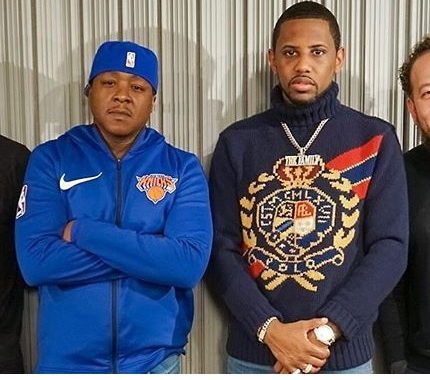
Hip hop artists, Jadakiss and Fabolous - masters of verbal expression through analogy, simile, and metaphor.
Simile – a figure of speech comparing two unlike things that is often introduced by like or as.
Metaphor – a figure of speech in which a word or phrase literally denoting one kind of object or idea is used in place of another to suggest a likeness or analogy between them.
What is the significance of analogy in communication?
Okay, so, analogy, simile, and metaphor – how can they be used in communication? Imagine the world as one big Venn diagram.
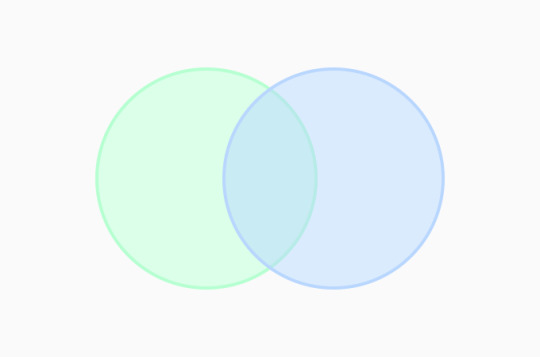
Every time you meet someone new, you are bound to have commonalities AND many differences. The commonalities make you relatable and the differences make you unique! Use analogy in commonalities to build trust, perspective and understanding. Introduce your differences to them in ways they can understand it!
In the book, Enchantment, Guy Kawasaki focuses on how to make a cause short, simple, and palatable. If you are a coach, teacher, or parent (or anyone else tasked with guiding development), you will have a cause (or more likely, many of them) and you will have to find a way to resonate. Kawasaki suggests both simile and metaphor as a great way to relate your cause (likely a new concept) to something everyone understands, (Kawasaki 45-46).
Furthermore, Kawasaki suggests that people are more likable when they use analogies that everyone understands, (Kawasaki 14).
Funny concept, we can use analogies to get people to trust and understand. So many scientists do important and impactful work. The vast majority of people can’t follow along (it’s a completely different language of terms). There has to be an analogy for that!
If you have something important to say – don’t lose the French by speaking Spanish.
Of Moon Juice and Minis
On February 3, 2018, I was sitting in a dugout with Cole, Matt, Kam, Colt, and Emilio – 5 high school seniors. In the baseball event business, often there isn’t much time to be a human being, so when there is time, it is important to maximize it – but like any social situation in life, how do you break the ice?
It was about 1pm and I hadn’t eaten all day – but, I did have a Moon Juice that I had bought at a shop in Venice Beach the day before that promised to raise my energy levels. So, I pull it out of my backpack and immediately liken it, aloud, to a mini-potion (provides extra protection) from the then-popular (and now, still, maybe?) game, Fortnite.
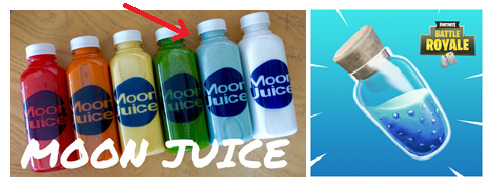
All 5 high school seniors knew exactly what I was talking about because everyone was playing Fortnite at the time and at that moment, we had a commonality. The following 2 hours were light and a lot of fun.
Fast forward 2 years and I continue to maintain a friendship with 3 of the 5 guys from that dugout on that Sunday in February. Shout out to Moon Juice, Fortnite and metaphors, bringing people together in Compton, California since 2018.
Counter Movement Jumps + Rebounding a Basketball
The counter movement jump (CMJ) assessment that we use in assessing athleticism requires an athlete to jump 3 times as quick as they can, trying to get as high as they can.
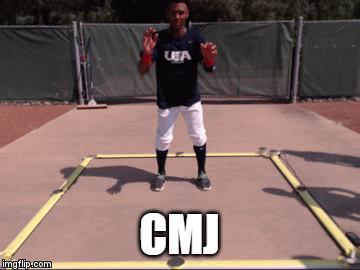
“What do you mean by as quick as I can?”
“You want me to be quick or jump high?”
“So can I tuck my knees?”
Okay. Imagine you get an offensive rebound in basketball and you have to get back up there again for the put back – however you would do that.
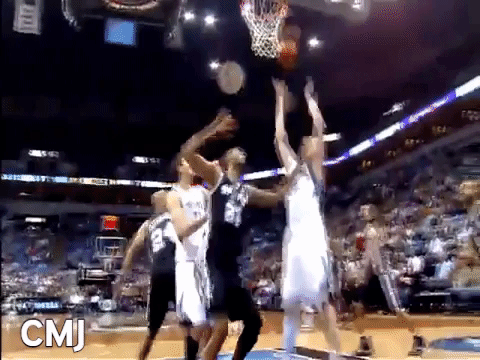
When you need more than experts
In the book, Range, David Epstein outlines an example of how in many cases, experts can be too narrow-minded in problem-solving:
In one instance, Dunbar actually saw two labs encounter the same experimental problem at around the same time. Proteins they wanted to measure would get stuck to a filter, which made them hard to analyze. One of the labs was entirely E. coli experts, and the other had scientists with chemistry, physics, biology, and genetics backgrounds, plus medical students. ‘One lab made an analogy drawing on knowledge from the person with a medical degree, and they figured it out right there at that meeting,’ Dunbar told me. ‘The other lab used E. coli knowledge to deal with every problem. That didn’t work here so they just had to start experimenting for weeks to try and get rid of the problem.’ …
In the lone lab that did not make any new findings during Dunbar’s project, everyone had similar and highly specialized backgrounds, and analogies were almost never used. ‘When all the members of the laboratory have the same knowledge at their disposal, then when a problem arises, a group of similar minded individuals will not provide more information to make analogies than a single individual,’ Dunbar concluded. – (Epstein 118-119)
The non-overlapping parts of our Venn diagrams are what make us unique. Analogies, similes, and metaphors are the vehicle by which we can help others understand what they don’t know and help us maximize the impact of the diversity in our experiences and interests.
How can we learn to use analogy?
The best way to tap into analogy-potential is to continuously broaden your horizons. Diversify your experiences, interests, and thoughts. More experiences and interests = more material to draw from. Go visit a new place, go read a book about something new, go try a new sport.
Go be curious.
Remember learned gratefulness and the science behind neuroplasticity? You can always train your brain. Training your brain to make analogous connections for problem-solving and building relationships can be learned. You just have to regularly expose yourself to analogies, similes, and metaphors. But how?
Go read a book on poetry, poetry is full of analogy, simile, and metaphor.
Flip on Netflix or YouTube and watch your favorite stand-up comedian for an hour after dinner and count how many analogies, similes, and metaphors are used.
Attend (me) or participate in (Cole) the Great Durham Pun Championship – or whip out Punderdome at your next family gathering.
Last but not least, my personal favorite: hip hop music – quality lyricists lace their verses with analogies, similes, and metaphors. In fact, Royce da 5’9 is dropping an album tomorrow (2/21/2020) called The Allegory that is a metaphor for his evolution as a human being and mirroring that evolution to Plato’s Allegory of the cave.
youtube
Black Savage - the first single off of Royce Da 5′9′s ‘The Allegory’
Conclusion
“I especially love analogies, my most faithful masters, acquainted with all the secrets of nature … One should make great use of them.” – German Astronomer, Johannes Kepler via Range (Epstein 102)
Analogy has the power be a tool for communicating and connecting with people from diverse backgrounds, teaching and bridging gaps in comprehension, and providing perspective (which is critical for emotional well-being). Go take your analogy-potential to the next level, it just might enhance your coaching/teaching.
Recommended Reading
Enchantment (2012) - Guy Kawasaki
Range: Why Generalists Triumph in a Specialized World (2019) - David Epstein
0 notes
Text
Neuroplasticity: Why We’re Able to Learn New Things
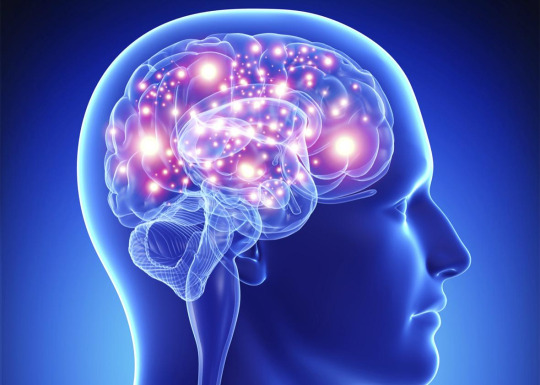
What is neuroplasticity?
Neuroplasticity is the brains ability to adapt to new situations and learn new skills. As we increase the number of times we do something, it becomes more automatic as a result of the strengthening of connections in our brains. As we stop using certain skills because they are no longer necessary or relevant for our daily lives, those connections in our brains get weaker.
Think of neuroplasticity like distance running – if we frequently run distance, we add endurance and we can train to run a marathon. If the marathon runner stops running distance for an extended period of time, they won’t be able to run the necessary 26.2 miles.
Use it or lose it.
How does age affect neuroplasticity?
It is important to note that the brain becomes less plastic as we age. What this means is that it is much easier for the developing brain to learn a new skill or change an existing habit than it is for a more mature brain. An example of this is the backwards brain bicycle – watch as a man struggles to unlearn how to ride a traditional bicycle while his much younger son accomplishes the task in a fraction of the time:
youtube
Another great example of the difference in neuroplasticity between a developing brain and a mature brain is in learning a second (or third, fourth, etc.) language. Because of superior plasticity in the developing brain, it will be much easier for an 8-year-old to learn a second language congruently while learning their first than a 25-year-old. In fact, after the age of 18, fluency is harder to attain any new language – not impossible, just much harder.
Where does it apply in sports?
Well, in case you were wondering where this applies in sports, let’s start with Justin Turner of the Los Angeles Dodgers. Justin Turner hit 8 homeruns in parts of 6 MLB seasons prior to his age 29 season – at which point he made a conscious choice to change his swing to get the ball in the air and minimize groundballs. Since the swing change, Turner has hit 112 homeruns in 6 seasons and has sustained an OPS over .800 in each of those 6 seasons – while receiving MVP votes in 3 of those seasons. Neuroplasticity is the reason why Turner was able to make his career-altering swing change.
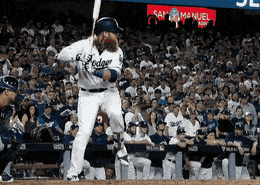
In basketball, many kids have a dominant hand for dribbling and for taking lay-ups. Practicing dribbling and taking lay-ups with the off-hand will open up many more creative solutions for beating a defender. In strengthening the off-hand, the kid is taking advantage of their neuroplasticity.
A soccer player learns to strike the ball different with their foot to create more bend on their shot.
A golfer learns how to deloft the clubface at contact to create an effective, low-flying shot that can evade tree branches on the way out of trouble.
A running back in football adds a spin-move or a jump-cut to their repertoire to evade defenders.
A 5-year-old learns how to throw a frisbee.
Neuroplasticity.
How to get started …
“Whatever you focus upon, increases.” - Andy Andrews (via The Noticer 13).
What do you want to learn? Is it a new physical skill? Or is it a healthier mindset? Whether it is physical or mental, your brain is going to need deliberate and correct repetitions to create a new default.
I learned how to do a headstand and after many failed attempts (the learning process), my brain now knows exactly where my body needs to get to in space to achieve balance in this position:
youtube
While you can also learn to stand on your head, I challenge you to begin brushing your teeth with your off-hand. See how hard it becomes to not live life on autopilot for such a small task. Stay with it though! I became a left-handed tooth-brusher in April 2019 – it wasn’t until September that the deliberation and awkwardness of every stroke began to wear off. 8 months later, it still isn’t as automatic as the right hand, but it’s much more normalized than it was even a month ago.
If you want to take the challenge even further, try eating with your off-hand too.
Conclusion - in the name of brain health
The struggle you experience when brushing your teeth with your off-hand for the first time (or fortieth) is good for your brain health. You have to focus on what you are doing and as a result, your brain is firing much more than when it’s on autopilot for many of the remedial tasks we complete on a daily basis.
The fact is, an active brain is a healthy brain – learning new things is good for brain health.
Active aging involves more than moving your body. You also need to move your brain. “When you exercise, you engage your muscles to help improve overall health,” says Dr. Ipsit Vahia, director of geriatric outpatient services for Harvard-affiliated McLean Hospital. “The same concept applies to the brain. You need to exercise it with new challenges to keep it healthy.”
Regardless of age, keep that brain firing – challenge yourself daily. Now, take advantage of your neuroplasticity and go learn something new.
Recommended Reading
The Talent Code: Greatness Isn’t Born. It’s Grown. Here’s How. Chapter 2 (2009) - Daniel Coyle
0 notes
Text
Ignition: Starting a Fire that Will Sustain
What is ignition?
In order to improve at anything, we must endure difficulty in our practice. Difficulty in practice can be frustrating and even discouraging – sometimes you may even ask the question: is this worth it? We’ve all likely been there in some aspect of our lives, and we’ve also all probably decided not to pursue something because it wasn’t worth the struggle. In the world of getting better at things, it is vital that there is always a driving force behind why we endure difficulty to get better at things.
As Daniel Coyle outlines in The Talent Code (97), ignition is the driving force. Ignition is the why. Ignition is the fuel in the gas tank when you try and fail repeatedly. Ignition allows us to endure the struggle to realize the reward on the other end.
Coyle also has a term for the practice that is particularly difficult and productive: deep practice (similar to deliberate practice). I’ll get into that more in a future post. For now, let’s look at the process of skill acquisition in a fuel-engine illustration.

Deep practice is a requirement for skill acquisition. Deep practice is difficult and often times intense as it requires pushing limits of what the young athlete is capable at that point in time. In order for a young athlete to continue to engage in the challenges of deep practice, they must be motivated or ignited. The engine is only as good as the gas tank fueling it.
Willemstad, Curacao
The following is a summary of an example of ignition from Talent Code (97) by Daniel Coyle – I highly recommend it. Shout out to Matt Pierce for the recommendation.
During the 1996 World Series, then nineteen-year-old Atlanta Braves rookie, Andruw Jones, hit two home runs in two innings off of the New York Yankees’ Andy Pettitte. Jones is from the small town, Willemstad on the island of Curacao. Following that night on the island, in which there was mass celebration and firecrackers throughout the night, there was a boom in Little League sign-ups.
youtube
A little less than five years later, 2001 was the first year since 1980 that the Curacao little league team advanced out of the Caribbean regional to Williamsport, Pennsylvania for the Little League World Series (LLWS). 2001 was the first of 9 straight years that Willemstad made the trip to Williamsport to represent the Caribbean (over Puerto Rico, the Dominican Republic, and ten other countries). In 2004, the little league team from Willemstad beat Thousand Oaks, California to win the LLWS. Half of the team first signed up to play little league baseball in the weeks following Andruw Jones’ home runs in the 1996 World Series and two members of the team were on 2019 MLB Opening Day Rosters: Jonathan Schoop (Minnesota) and Jurickson Profar (Oakland).
It would be naive to think that two, three-second moments on one night in October was the sole reason why the little league team from Curacao, an island of less than 150,000 inhabitants, emerged from the Caribbean region for 9 consecutive years from 2001-2009. Many other environmental factors were also in place to develop the eager talent: great coaching, disciplined culture, supportive parents, love of the game, and the ability to tap into deep practice.
Oh by the way, the fire burns on – a little league team from Pabao, Curacao participated in the LLWS final in 2019 (though they lost to River Ridge, Louisiana).
GJ Hill (Infielder, Arizona Diamondbacks Organization)

On favorite baseball moment: “I remember one summer when Tulo (Troy Tulowitzki) was the man on the Rockies. I would watch every game to watch him and he’s walking up to the plate in the first inning with “The Man” by Aloe Blacc blaring. I got chills and butterflies. It happens all the time.”
Eric Peterson (Fourth Coach, St. Louis Cardinals Organization)

On favorite player growing up: “When I watched Chase Utley hit a grandslam in his first Major League at-bat against the Rockies at the Vet – immediately became my all-time favorite player. Every time the Phillies played the Marlins, I was locked in on Dontrelle Willis. He was dominant and extremely unorthodox, showed his emotions – it made baseball exciting.”
Alonzo Wright (Recruiting Coordinator, Florida State College at Jacksonville)

On favorite baseball moment: “When I was younger – going to the park and watching my brothers and I wanted a number on the back of my shirt – I was 4 years old and I wanted a 4 shirt because I liked the way it looked and I was 4.”
On favorite player growing up: “Rickey Henderson – in our neighborhood there wasn’t specialization – Michael Jordan in the NBA, Randall Cunningham in the NFL, Deion Sanders – they all had one thing in common: flare. They were entertainers. Rickey was similar and kept my attention. I pop my collar still to this day.”
Twon Harris (Right-Handed Pitcher, Mississippi Gulf Coast CC)

On favorite baseball moment: “When I was younger, my pops took me to an Astros game. To this day that is the only MLB game I have been to lol. But being able to see those guys in action was definitely the most exciting experience I had as a kid.”
On favorite player growing up: “My first favorite player was Yordano Ventura. And now I keep up with [Marcus] Stroman, GCole (Gerrit Cole), Luis Severino, and Tim Anderson. Those guys are straight dawgs and the pitchers are super athletic. Can’t have any unathletic guys in my top 5.”
Corbin Carroll (Outfielder, Arizona Diamondbacks Organization)

On favorite baseball moment: “The moment in my life that I first remember really getting excited about baseball was in teeball. I remember hitting the ball over the center fielder’s head and the coaches waving me around the bases and me having this big smile on my face as I ran as fast as I could and finally I touched home. But then the coaches kept waving me and I went back around the bases, touching first base then stopping at second before the ball finally got back into the infield. All the parents were laughing and I was so excited because it felt like I had just done the coolest thing ever.”
On favorite player growing up: “My favorite player growing up was Ichiro and I have this distinct memory being way up in the third deck of the bleachers on the first base side watching him do his famous pose.”
Cole Roederer (Outfielder, Chicago Cubs Organization)

On favorite baseball moment: “I think the moment in life that made me excited was when I was 10 and we played in the Pony World Series in Texas. There were announcers and everything and we ended up winning it all. It was the first time in my life where baseball was super intense and I truly fell in love with it.”
On favorite player growing up: “I was in love with Josh Hamilton and Vladimir Guerrero – the way they played, the way they crushed balls – I wanted to be like them.”
How can we create ignition?
Sources of ignition are largely subconscious. Ignition is the reason why. Why does the young athlete think he will play in the Major Leagues or the NBA someday? Was there a moment that resonated with the athlete while watching a game in person, a family member, or someone from the local community? The fuel for the engine comes from the young athlete subconsciously knowing in their head: this is what I want to be or what I want to achieve. As a person responsible for the development of young athletes, there are a number of things that you can do to trigger ignition. Reactive ignition comes as a response to something else:
1. Tampa Bay Rays platinum glove award winner, Kevin Kiermaier, makes a remarkable catch in center field, a young athlete thinks to themselves, I want to do that too. If the young athlete doesn’t watch Kevin Kiermaier play, maybe they don’t get ignited.
Moments can ignite – take a kid to a baseball game.
2. What does a 12 year old baseball player have in common with Stephen Curry? Maybe they have the same birthday? Or both wear the same shoes? Or maybe they have the same strengths on the court? Coaches and parents can help create these connections.
Commonalities can ignite – research, observe and generate awareness.
3. An older brother is the best defensive player on the field and allows fewer goals than anyone on the team, 2 to be exact. The younger brother wants to be even better and allow no goals next year.
Family members and close friends can ignite – be a role model / mentor or facilitate others to be a role model / mentor.
Understanding the role ignition plays in development is critical. Understanding the role that coaches and parents can have in creating ignition is also critical. Make it a conscious effort to weave ignition opportunities into your environmental fabric.
Recommended Reading
The Talent Code: Greatness Isn’t Born. It’s Grown. Here’s How. (2009) - Daniel Coyle
0 notes
Text
Exploring the Drift 2D Protocol: A Lower Half Symmetry + Dynamic Stability Assessment
What is the Drift 2D Protocol?
The Drift 2D Protocol is an assessment that requires an athlete to complete five, single leg jumps on each leg, trying to get as high as they can in the air, as quick as they can, while trying to stay in the middle of the box. This assessment will display a comparison between the performance output of the right and left legs in the realm of explosivity and dynamic stability.
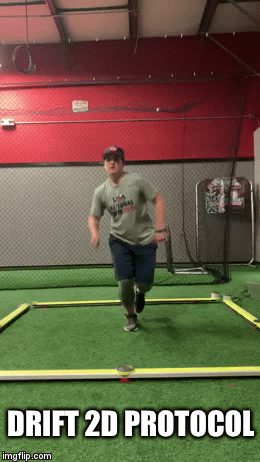
In evaluating dynamic stability, if an athlete is unbalanced, wobbling, or unstable during the five jumps, they could be wasting precious time and energy stabilizing that could make their kinetic chain more efficient.
When looking at explosivity, a significant differential between the right and left leg could mean a higher risk of injury or that the athlete moves better in one direction vs. the other.
The Importance of Identifying Imbalance + Injury Prevention
If a significant imbalance is identified (look for a differential of greater than 10% in RSI (Reactive Strength Index), (ground) contact time, or flight time), it may be important to intervene as a sizable imbalance can be a cause of existing pain or potential injury.
Tip: RSI = FT / GCT
Injury can occur as a result of imbalance when the stronger leg is overloaded because it is compensating for the weaker leg. Think running – if the right leg is stronger than the left leg at full sprint, the right leg will be pushing harder and likely absorbing more force at foot-strike.
While there is no one-size-fits-all answer on imbalance in sport, there is research in looking at non-contact injuries in relation to lower half imbalance (specifically in soccer) – for example.
For baseball and softball athletes that have non-balanced loading patterns, a bit of an imbalance may not be such a bad thing. This is certainly a space for future study and is open to debate. At the end of the day, most baseball and softball players still need to fully exert in sprinting, so keeping the imbalance at or below 10% is still likely the ideal target.
Sample Report (What am I looking at?)

Delta% (highlighted in yellow) – this is the differential between the left and right legs for each listed metric. Height, power, contact times, flight times, and area (checked in blue) should all be in the realm of 10% or less. If they aren’t, there is some room to create some balance in the profile.
Height and Power – Don’t put a ton of stock in these two as they are often outputs of (ground) contact time, flight time, and (used) area. If the delta is less than 10% on both of these, there probably isn’t much of a cause for concern, if the delta is greater than 10% on either or both of these, take a look at contact time, flight time, RSI, and (used) area to try and get to the bottom of it.
(Ground) Contact Time – This is how long the athlete is in load, on average, for the 5 jumps during this assessment. For the athlete in the sample report above, their left leg spends, on average, .023 seconds longer in load than their right leg.
Flight Time – This is how long the athlete is in the air, on average, for the 5 jumps during this assessment. For the athlete in the sample report above, their body spends, on average, .028 seconds less time in the air when they launch off of their left leg vs. their right leg.
RSI – We have determined that the right leg loads quicker and the body flies longer when launching off of the right leg. Let’s use our formula for RSI from above to determine how significant the explosivity imbalance is.

The RSI for the left leg is 1.18 and the RSI for the right leg is 1.37 – which equates to a 13.5% differential (highlighted in yellow above). Needless to say, this athlete has some work to do in training. They should target increasing explosivity in their left leg in their training regimen or it may be a functional movement issue that requires increasing mobility to load properly – either way, this is where strength and conditioning professionals make their money.
(Used) Area – Used area is an opportunity to objectively represent how much drift the athlete experienced while jumping 5 times during the assessment. A larger used area will mean that the athlete was less in control of their movement and likely signals a stability issue. For the athlete displayed in the sample report, there is a massive discrepancy between the left and right legs. The left leg covered a mere 23.5 in^2 over the course of 5 jumps while the right leg covered 143.3 in^2 over the course of 5 jumps. The greater the used area, the more energy is being used in stabilizing the leg instead of executing the task at hand. This athlete should consider targeting right leg stability (could be knee or foot related) in training to more efficiently utilize their power.
Left Leg Coordinate Plot (Red) – The 5 dots represent the 5 jumping points for the athlete during the assessment. The red-striped rectangle is a visual representation of the Area[in^2] from the table above.
Right Leg Coordinate Plot (Green) – The 5 dots represent the 5 jumping points for the athlete during the assessment. The green-striped rectangle is a visual representation of the Area[in^2] from the table above. Notice how much tighter the left leg rectangle is compared to the right leg rectangle. Per the -510.7% differential, dynamic stability is greater on the left leg than the right for this athlete.
How Does it Apply to Sports? (aka the good stuff)
For Cristiano Ronaldo taking a free kick in soccer, his left leg is his plant leg. The plant leg creates an anchor to generate power through the kinetic chain. If his plant leg lacks the ability to stabilize quickly, the striking leg will kick with less force and the ball will travel with less velocity – additionally, he may lose accuracy if the plant leg is still attempting to stabilize as his right foot strikes the ball.

Explosivity will allow Ronaldo to kick the ball harder. Dynamic stability will allow for power efficiency and greater accuracy.
When Russell Westbrook explodes off the hardwood for a vicious dunk, he does so with the understanding that what goes up, must come down. Very rarely is Westbrook able to land perfectly on two feet and for this reason, it is imperative that he is able to land and absorb force on a single leg.
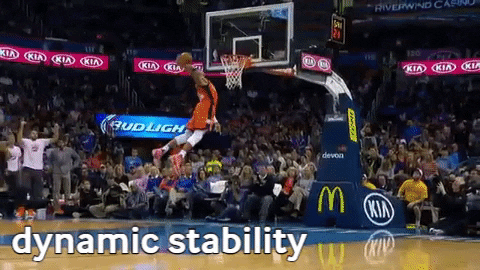
Explosivity will allow Westbrook to jump higher. Dynamic stability will allow for safe and proper force absorption when he lands to keep him healthy and on the court every night.
You may recall this play from earlier on in the calendar year in which Seattle Mariners shortstop, JP Crawford, makes what is to you and I, an impossible play. In addition to arm strength and elite proprioceptive ability, JP is able to quickly stabilize on his right leg to produce an unlikely and accurate throw to nail the runner by a half-step.

Explosivity will allow JP to get more velocity on his throw. Dynamic stability will allow for JP to maximize his throwing velocity and accuracy in a fraction of a second.
In Closing
While jumping five times on each leg may seem a bit out of place for an athlete or evaluator, we are able to gain a number of valuable insights into explosivity, efficiency, dynamic stability, and (subjectively from watching) functional movement patterns from the Drift 2D Protocol assessment. Consider the breakdown above when working with an athlete as a compass to the underpinnings of why they can or cannot (currently) do what they do.
0 notes
Text
Basic Movement Skills II: Donorsport + Multisport
Expanding on the topic of basic movement skills, we come to the concept of both a donorsport and a multisport. Let’s learn with 2018 NFL MVP and Kansas City Chiefs quarterback, Patrick Mahomes.
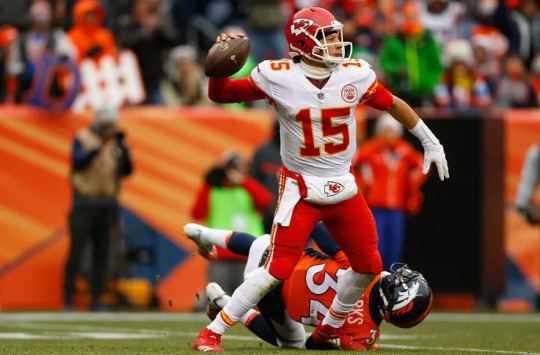
What is a Donorsport?
If you don’t know what a donorsport is, you absolutely do, you just didn’t know there was a name for it. Per the Athletic Skills Model (Wormhoudt 108), a donorsport is a sport that employs skills that are directly transferable to an athlete’s main sport.
Easy enough: baseball would be considered an obvious donorsport for the development of Patrick Mahomes’ ability to throw a football. If you don’t watch ESPN, football, or follow football, this may be news to you, however, to the rest of the world, Mahomes is often praised for his ability to make strong, accurate throws from different arm slots and/or while contorting his body while on the move – reminiscent of what a middle infielder is tasked with learning to do in baseball in order to make a number of different plays fielding a groundball. Check out the second throw highlighted in this video:
youtube
While everyone focuses on Patrick Mahomes past life as a baseball player (mainly because of his father’s MLB ties), it is worth noting that Mahomes averaged 19 points and 8 rebounds per game on the basketball court during his senior year as well. Mahomes was a true 3-sport athlete in high school and didn’t specialize in football until his sophomore year at Texas Tech, (Stephens 2014).
So … what is a Multisport?
While a donorsport has an obvious skill transfer to the primary sport like the development of a strong, accurate arm needed in both football and Mahomes’ donorsport, baseball, a multisport is a little less obvious.
“Multisports are crucial for a fundamental multilateral development, which leads to fewer injuries, longer athletic careers, less dropouts, increased physical fitness, and more variation mentally and physically.” - Wormhoudt via Athletic Skills Model 112).
How does climbing a tree transfer to soccer? The basic movement skill of climbing trains proprioception (understanding where your body is in space) and the ability to stabilize. Proprioception and stability are found universally in sport-specific situations in any sport. Rock climbing or climbing in nature in general is a multisport for just about any sport.
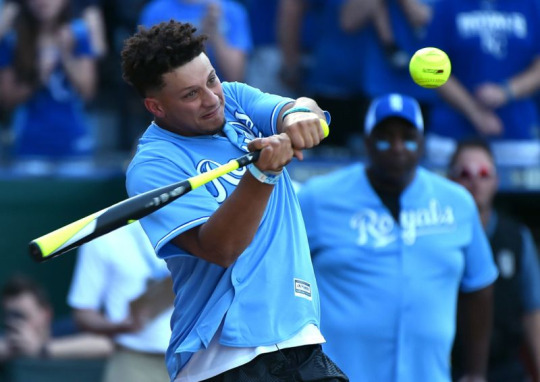
Additionally, the concept of a multisport helps diversify the portfolio. While Patrick Mahomes may not need to be able to distinguish between a fastball and a curveball in half of a second, he’s never going to tell you that he wishes he didn’t have that skill. Furthermore, there is a perceptual transfer to decision-making that he employs every single play in football – just as he had to process the pitch and decide whether or not to swing, as a quarterback he has to decide, as multiple 250+ lb. defenders are bearing down on him, which receiver is open, which receiver will be open, and where to throw the ball all in a matter of seconds.
Tie it all together for me …
As was demonstrated in the introduction to basic movement skills, baseball only covers half of the basic movement skills. So, what does the basic movement skills portfolio look like for 3-sport athlete, Patrick Mahomes? Let’s pretend Mahomes was exclusively a football player …
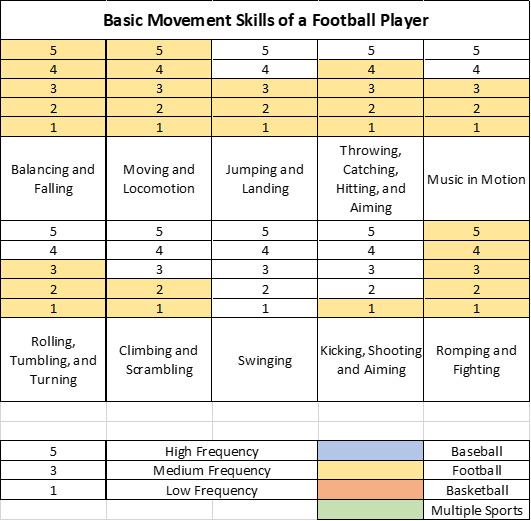
It looks like playing only football touches on 8-9 basic movement skills and 7 with medium to high frequency. Overall, football is tremendous for the development of a diverse, holistic athletic foundation. Now, let’s add baseball into the portfolio to see how this boosts the Mahomes profile …
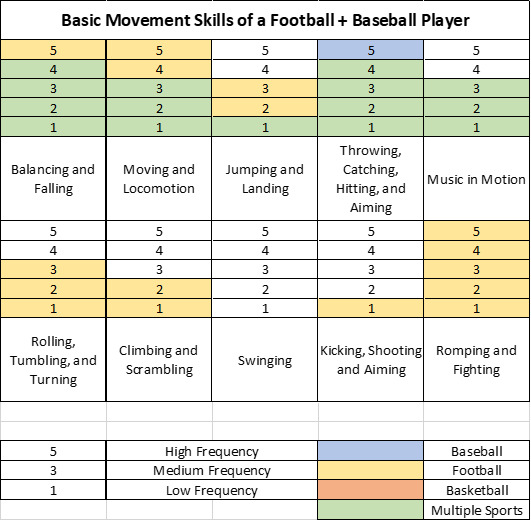
When adding baseball into the mix, at first, it doesn’t appear to bring a ton of additional value to the portfolio – noticeably, baseball boosts the throwing, catching, hitting and aiming skill to a 5, but consider the plethora of green now present in the portfolio. Green represents overlap in basic movement skills between football and baseball. Green also represents that by adding baseball to the mix, we have found a donorsport for football that will significantly affect the development of at least 4 of the 10 basic movement skills.
We’re not done yet, remember that Mahomes also played basketball …
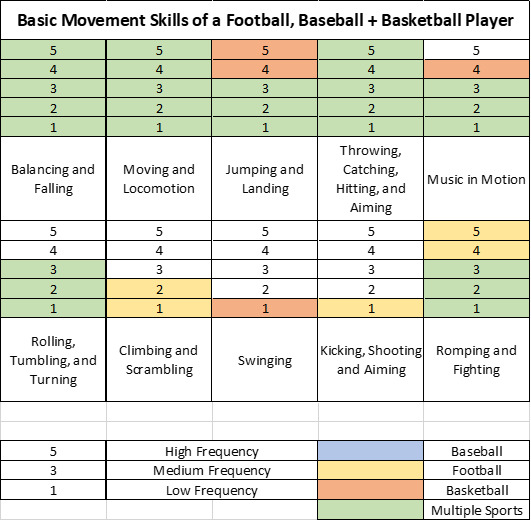
Basketball provides a boost across the board for the portfolio as it demonstrates high frequency elements of the 5 basic movement skills listed up top. Across the bottom row, rolling, tumbling, and turning see some nice overlap with football and the contact-focused football’s romping and fighting skill is boosted by the physicality of basketball in the paint. Overall, basketball is a tremendous donorsport for football.
36 of the 50 ‘frequency blocks’ are occupied by the combined efforts of football, baseball, and basketball. More impressively, 27 of 36 occupied ‘frequency blocks’ are green, meaning, these sports complement each other well in developing a holistic athlete.
In Summary
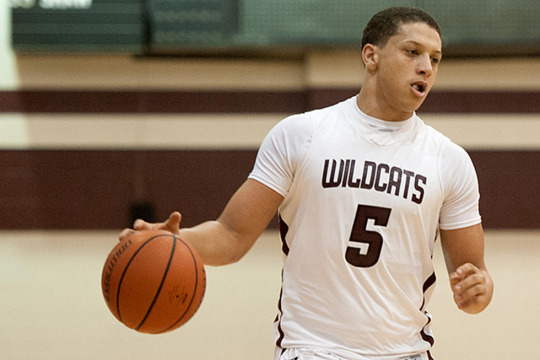
It is important to consider both the obvious and non-obvious benefits of sampling and playing a variety of sports and physical activities. As illustrated with Patrick Mahomes, his athletic foundation benefited greatly from playing 3 sports that complement each other across a number of basic movement skills. Use basic movement skills as a simple tool to understand what each sport or physical activity is bringing to the table in terms of development and supplement that understanding by employing donorsports and multisports to build the movement foundation for the holistic athlete. Please, just make sure that the athlete is having fun.
Recommended Reading
The Athletic Skills Model (2017) - Rene Wormhoudt, Geert J.P. Savelsbergh, Jan Willem Teunissen, and Keith Davids
0 notes
Text
An Introduction to Basic Movement Skills
Aside from the obvious …
Common rhetoric is that early-sport specialization is bad – why? Well, the kid only plays one sport and is at risk for overuse injury and burnout or disinterest – accurate. But from a developmental perspective, what is the kid missing out on by only playing one sport?
Let’s say that a kid only plays baseball and that they practice twice a week and play once a week for 8 months out of the year. That likely won’t burn the kid out or put them at risk for overuse injury, but the kid will miss out on basic movement skills that other sports and activities provide.
Per the Athletic Skills Model, there are 10 universal basic movement skills that all sports and physical activities are comprised of. These basic movement skills are the foundation for the holistic athlete and support the actions that an athlete performs in competition. The best way to acquire basic movement skills is through unstructured play, however, every sport or physical activity requires a different set of basic movement skills and participating in these sports and activities can help develop a well-rounded foundation. Sampling a number of different sports and activities during early stages of development will build a more holistic and more prepared-to-specialize athlete as they enter their early teenage years.

The 10 basic movement skills are balancing and falling; romping and fighting; moving and locomotion; jumping and landing; rolling, tumbling and turning; throwing, catching, hitting and aiming; kicking, shooting and aiming; climbing and scrambling; swinging; and music in motion.
Sometimes the best way to strengthen basic movement skills that will make you a better athlete in one sport is to play other sports or activities where these skills are put to use and appear with greater frequency. I plan on getting more in depth on the concepts of donorsport and multisport in future posts.
See below for a breakdown on the 10 basic movement skills per the Athletic Skills Model (via Wormhoudt 93).
The 10 Basic Movement Skills
Balancing and Falling - Balancing and falling are linked to all 10 of the basic movement skills. In all movements we need to maintain and restore balance. When we become unbalanced, we fall. It is important to learn how to fall in a number of different ways so as to quicker regain balance and stability to continue activity.

Moving and Locomotion – Moving and locomotion is the act or power of moving from place to place. This skill involves forward, backward, and lateral movement as well as acceleration and deceleration.

Jumping and Landing – Jumping and landing involves flight, height, and rotation. Neuromuscular control is imperative for optimal alignment in jumping and landing.

Kicking, Shooting, and Aiming – Kicking, shooting, and aiming are representative of ball-handling skills with the lower half of the body.

Romping and Fighting – Use contact to push, pull and balance. Some form of contact mat or cushion should be employed. Most team sports contain some element of contact.

Climbing and Scrambling – Related ways of moving up, down, and sideways.

Swinging – Experienced by sitting or standing on a swing or swaying while hanging onto a horizontal bar.

Throwing, Catching, Hitting and Aiming – Throwing, catching, hitting, and aiming are representative of ball-handling skills with the upper half of the body.

Rolling, Tumbling and Turning – Rolling, tumbling, and turning involves rotating on different planes and axes including the longitudinal, latitudinal, and depth axes’.

Music in Motion – Music in motion is all about response to varieties of rhythms. The music in motion basic movement skill can improve body and muscle control. In terms of baseball, think rhythm and timing in hitting, pitching, and fielding either a ground ball or a fly ball or even timing a leap to catch a line drive.

An Incomplete Foundation
Now that the 10 basic movement skills have been introduced, consider the early-specialized kid who practices and competes moderately with 4 months of down time over the course of a calendar year. While that kid may not experience an overuse injury or burnout, they are missing out on acquiring certain basic movement skills such as kicking, shooting, and aiming (lower half); romping and fighting; climbing and scrambling; swinging; and rolling, tumbling, and turning.
Furthermore, the 5 basic movement skills used by the sport of baseball appear at different frequency levels. For instance, the basic movement skill of throwing, catching, hitting, and aiming (upper half) appears at a high frequency, whereas jumping and landing appears at a much lower frequency. For further thought, consider frequency of jumping and landing in basketball compared to baseball (it’s not even close). Now see below for a subjective breakdown of basic movement skills used in baseball and the frequencies at which they appear in a typical practice, training, or competitive environment.

The early-specialized baseball player will get low or moderate exposure to 3 basic movement skills and miss out entirely on 5 – yikes!
But he/she is only 5 years old!!! (…6, 7, 8, 9, 10).
Case: Robert Lewandowski
Scientists who have studied adolescent practice habits of eventual elite athletes have found that:
“They play a variety of sports, usually in an unstructured or lightly structured environment; they gain a range of physical proficiencies from which they can draw; they learn about their own abilities and proclivities; and only later do they focus in and ramp up technical practice in one area,” - David Epstein (via Range 7).
Take FC Bayern Munich’s Robert Lewandowski, the top goal-scorer for country and club in Europe in 2019, for example. For those who don’t know the world-class, Polish striker, here’s something Americans never thought they’d see in a soccer game, 5 goals in 9 minutes:
youtube
Listen to the clip below from 3:50 to 4:50 to hear about Lewandowski’s parental-guided upbringing in physical activity and sport.
youtube
In Closing
The developing adolescent body will benefit greatly from sampling a number of sports and activities (it’s okay to have a favorite). Consider pre-teen to be pre-specialization. Around high school is when single or dual sport specialization makes the most sense. Use pre-specialization as a time period to build a well-rounded foundation of movement skills. A kid with a strong foundation will be best positioned to specialize (in any number of sports or activities).
Recommended Reading
The Athletic Skills Model (2017) - Rene Wormhoudt, Geert J.P. Savelsbergh, Jan Willem Teunissen, and Keith Davids
Range: Why Generalists Triumph in a Specialized World (2019) - David Epstein
0 notes
Text
Creating a Learning Ecosystem I
“The environment that people live in is the environment they learn to live in, respect, and perpetuate.” – Ellen Swallow Richards (via Legacy 71)
Create Environments for Unique Solutions
How does a teacher learn in a teaching environment? There are many ways to solve the same presented problem. Just because a certain solution consistently works, doesn’t mean it is the most efficient solution. Human beings are creatures of habit and once a solution consistently works, it is hard to imagine exploring other potential solutions. In the training environment, present trainees with problems that need to be solved and observe their creative process in coming to a solution. Maybe their solution is more efficient than the current solution or maybe their process or solution triggers a more efficient solution. Worst case scenario, the trainees struggle and the teacher guides them to the existing solution that consistently works.

FC Barcelona has one of the best youth development models in the world. They have standardized their philosophies and instill them in academies on all 6 inhabited continents. Per a conversation with the director of one of these academies, one such philosophy is that coaches are to present rules and environments and it is up to the players to explore and discover solutions. In watching a player make a mistake in the practice environment, the process for the coach is as follows:
1. First time mistake is observed – let it go.
2. Second time mistake is observed – identify the mistake for the player.
3. Third time mistake is observed (and all subsequent occurrences) – ask the player questions until they arrive at the solution. This approach is empowering for the player because in answering the guiding questions, they arrived at the solution.
“Don’t tell people how to do things, tell them what to do and let them surprise you with their results.” – General Patton
As a teacher, create learning environments for your students and trainees as well as yourself.
Learn from Anyone
“Leaders are learners.” – James Kerr (via Legacy 65)
The world is many things. Among many things, the world is dynamic and full of a boundless amount of opportunities, experiences, and choices. Every day is full of choices of all types of importance and assessing opportunity cost. Do I do this or do I do this? The beauty of a collaborative, open-minded learning environment is that the people within it will all have their own unique sets of experiences, perspectives, life choices, and time investments. These unique experiences, perspectives, life choices, and time investments transfer to all facets of daily life and can provide creative solutions and alternate thought processes if they are enabled.
Brian Haner Jr. (better known as Synyster Gates, lead guitarist for Avenged Sevenfold) has spent the past couple of years developing an online platform for anyone learning to play the guitar. For anyone unfamiliar with the musician / for your entertainment:
youtube
Haner Jr.’s online school, Synyster Gates School, has created a teaching and learning community centered around the instrument. An observation that he frequently makes in interviews is that the community has shown him that you can learn from anyone. In a recent episode of the Ernie Ball: Striking a Chord Podcast, Haner Jr. once again echoed that sentiment:
“I’ve found that beginner students have been the greatest contributors to a lot of the stuff – and that’s what you hope for – the beginner students are sharing their eureka moments – that I’ve long forgotten – with all these other kids, and there’s a few different ways in how you go about these eureka moments and they resonate differently with all these different kids.” – Brian Haner Jr. (Ernie Ball: Striking a Chord – October 18, 2019)
Regardless of age or experience, every human being has a unique chemistry of life experiences. So empower them to share!
Fail Forward: Vulnerability + the Fear of Judgment
How does a teacher or leader empower their students or trainees to share their unique perspective? It starts with vulnerability.
Where does vulnerability come from? Human beings will open up in environments where they aren’t afraid of judgment. Few human beings will establish judgment as their greatest fear, but fear of judgment follows every human being everywhere they go, every single day.
How do you minimize the fear of judgment? The creator of the environment must show that they too, are human. I have failed, and through my failure, I have strengthened my knowledge and understanding. Failure has made me better and will continue to make me better. I invite you to fail with me. If the human beings in the environment understand that failure is part of learning and failure is encouraged, the cloud of the fear of judgment begins to dissipate.
“Failure shows us the way – by showing us what isn’t the way.” – Ryan Holiday (via The Obstacle is the Way 86)
Create an environment where failure is an essential ingredient for success. Furthermore, make sure it is understood that while it is okay to fail, you should not fail the same way twice.
Role of Ego
A healthy ego knows the best way to solve the problem and has no need for unique solutions.
A healthy ego cannot learn from those with less experience and does not need to learn from anyone.
A healthy ego is invulnerable and can do no wrong. Failure is weakness.
All human beings have ego – do not let it be the roadblock to your growth or your team’s success.
Recommended Reading / Listening
Ernie Ball: Striking a Chord Podcast – October 18, 2019 – Synyster Gates
Legacy (2013) – James Kerr
The Obstacle is the Way (2014) – Ryan Holiday
0 notes
Text
Emotional Wellbeing: A Foundation for Everything
Emotional wellbeing is a foundational element for development.

A mind at peace can accomplish great things without distraction whereas a cluttered mind is going to struggle to focus. In addition to being beneficial in a learning environment, emotional wellbeing translates to all facets of life from building meaningful relationships to getting a good night’s sleep.
Let’s explore.
Why Gratitude is Important
In It’s the Mission, Not the Mandates, education professional, Amy Fast, EdD, suggests balancing the focus in public education between standardized testing results, soft skills, and internal drive. The focus has increasingly been on standardized testing results in public learning environments and developing soft skills and the emotional wellbeing of K-12 students has taken a back seat.
“[John] Warner suggests that the most successful students – rather than being the ones who have mastered K-12 competencies – are the ones who are curious, can self-regulate, have passion, are empathetic, and have a healthy skepticism of authority,” (Fast 38).
Fast muses as to whether or not it is possible to incorporate practices of emotional wellbeing into schools. A 2015 Gallup Poll that explored hope, engagement, and general wellbeing of students in the United States showed that only 53% of students are hopeful, 64% have a positive wellbeing, and 53% find school engaging, (Fast 62). These are the same kids that coaches, trainers, music teachers and parents are trying to engage on a daily basis. Would making time for practicing gratitude every day in learning environments benefit the kids?
“[Shawn] Achor suggests that the happiest people are those who practice gratitude, exercise, meditate, and engage in random acts of kindness,” (Fast 112).
It is difficult to ignite a candle without a wick.
What to Practice
There are a ton of resources on mindfulness. That being said, I have pulled a handful of quick exercises from and inspired by Chade-Meng Tan’s Joy on Demand. I recommend starting here, and if you want to dive further down the rabbit hole, Google and/or your local Barnes and Noble should suffice for further exploration.
Daily Gratefulness Exercise (Tan 125)
Every night, I cap my day by acknowledging 3 new things that I am grateful for and I write them down. That last part is important. Write them down somewhere, that way you have them for reference. I find this exercise doubly effective when sharing with other people. Think of it like a reset button … and it should only take you a minute or two. After 19 consecutive months, still going strong, 3 things I am grateful for 11/18/2019:
1. How easy it is to share music – we used to have to burn CDs.
2. The idea of a laboratory – what a wonderful place to be creative and to not be afraid to fail.
3. The body healing itself when it’s banged up – so many people engage in contact sports knowing that their body is going to be beat up or bruised when they are done, but also knowing that their body is going to heal itself.
Tough Situation Exercise
This one was inspired by the Daily Gratefulness Exercise in that it taps into the power of 3. If you are experiencing either an unpleasant situation or a challenging task that you are less than thrilled about. Take a second and think of three ways it could be worse. Example below:
Hypothetical Situation: My car breaks down on the way to work.
1. Rental Cars aren’t a thing – so I have no alternate means of similar, independent transportation while my car is in the shop.
2. The person behind me wasn’t paying attention and rear-ended me.
3. I don’t have a cellphone to communicate with anyone at work that I’m going to be late.
I could continue for a long while, but for the sake of the exercise, let’s stop at 3. All things considered; my broken-down car situation really isn’t that bad.
These two exercises can be deployed daily and should get you off the ground in your quest for bettering your emotional wellbeing - regardless of your current baseline.
Where to Practice
The world is becoming exponentially busier every day. We are more connected than ever to everything via smart phones, social media, etc. etc. Stop me if you’ve heard this one before. Got it, thanks.
No, but seriously, to be effective in your gratefulness practice, go find a peaceful pocket of 5 minutes (at least) every day away from the world. Go find solitude as Cal Newport defines it in Digital Minimalism – “freedom from input from other minds,” (Newport 119). This means no music (which is therapeutic in its own way), no podcasts, no companions – just you and your thoughts.

Per “the world is becoming exponentially busier … we are more connected than ever … smart phones, social media, etc. etc.” – solitude isn’t going to find you in 2019, you must seek it. Make the rediscovery of solitude a daily habit and within it, attend to gratefulness.
Scientific Evidence
So all of this talk about gratefulness is … great, but where’s the proof? Scientific research in the realm of gratitude and its effects on wellbeing still has a long way to go, however, a number of researchers have found evidence that exercises in gratefulness have positive effects on mental health and wellbeing.

Glenn Fox, Ph.D., conducted a study that involved monitoring brain activity on subjects during a gratefulness exercise.
“Our results revealed that when participants reported those grateful feelings, their brains showed activity in a set of regions located in the medial pre-frontal cortex, an area in the frontal lobes of the brain where the two hemispheres meet. This area of the brain is associated with understanding other people’s perspectives, empathy, and feelings of relief. This is also an area of the brain that is massively connected to the systems in the body and brain that regulate emotion and support the process of stress relief.”
Your brain lights up like the fourth of July when you experience gratefulness! That seems short-lived, no?
Joel Wong, Ph.D., and Joshua Brown, Ph.D., conducted a study of a longer duration (12 weeks) that showed increasing positive effects on mental health from the 4 week milestone to the 12 week milestone for the test group:
“Although the different groups in our study did not differ in mental health levels one week after the end of the writing activities, individuals in the gratitude group reported better mental health than the others four weeks after the writing activities, and this difference in mental health became even larger 12 weeks after the writing activities.”
Gratitude is a learned behavior just like anything else, the more you practice, the more naturally it comes. Train your brain to default to grateful.
In Closing
Don’t forget the foundation. Take time every day to find a quiet place, practice being grateful, and develop a mind at peace. It seems so basic, it kind of is –
“Whatever you focus upon, increases,” – Andy Andrews, The Noticer
– like brushing your teeth or eating an apple, it’s good for you.
S/O for the book recommendations: Anna Kimbrell (The Noticer by Andy Andrews), Lauren Rhyne (Joy on Demand by Chade-Meng Tan), Charlamagne tha God (Digital Minimalism by Cal Newport)
To anyone who has taken the time to share what they are grateful for with me, it is always uplifting.
Recommended Reading
Digital Minimalism (2019) - Cal Newport
It’s the Mission, Not the Mandates (2016) - Amy Fast
Joy on Demand (2016) - Chade-Meng Tan
The Noticer (2009) - Andy Andrews
0 notes
Text
Exploring Man in the Box: A True Agility Assessment
What is Man in the Box (MITB) + What is true agility?
The MITB assessment involves an athlete starting in the middle of a 10 ft. by 10 ft. “box” with a Witty Sem “sensor” positioned in each corner of the box. For the first assessment, the athlete is looking to capture 10 randomly-ordered, ‘green boxes.’ For the second assessment, the athlete is looking to capture 10 randomly-ordered, ‘green 3’s’ and the challenge is increased for the brain by introducing a variety of colors, numbers, and shapes. See the video below for a demonstration of both:
youtube
MITB is a measure of true agility. In all sports, athletes are constantly changing direction based on what they are reacting to in their environment – why should we train or assess any differently? True agility involves a reaction component (uses your brain like 99% of competitive environments) that a typical 5-10-5 shuttle or agility ladder does not (more on that later).
If the ‘green 3’ time is slower than the ‘green box’ time, this means that the athlete’s brain is slowing their body down – that’s okay, it’s not abnormal and brain speed can be trained!
CHECK OUT BRAINHQ AND THEIR RESEARCH-BACKED BRAIN GAMES
How to correctly maneuver the MITB assessment.
It is important to acknowledge that there is a correct way to maneuver the MITB true agility assessment so that we can regulate, track and compare results. Provided no further direction other than “capture 10 green boxes as fast as you can,” there is potential to see a variety of approaches to the task. Some general rules to consider:
1. The athlete should always return to the middle of the box in between trials and should always keep their feet moving.

2. The athlete should avoid stopping and should not go directly to the next Witty Sem.

3. If the athlete returns to the middle of the box in between triggering each Witty Sem, the athlete will travel 141.4 ft. over the course of the 10 trials regardless of the order in which the ‘green boxes’ or ‘green 3’s’ appear.

From the middle of the box to the sensor and back is ~14 ft. - multiply that by 10 = ~140 ft. in total distance.
4. The athlete should alternate getting deep with their right and left leg so as to equally engage both legs in the assessment.
See below for demonstrations of getting deep with the right and left legs:
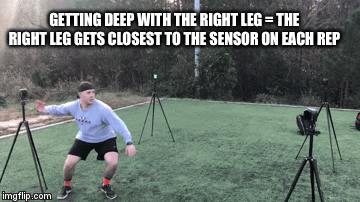

Define your rules for the athletes so that you can compare apples to apples!
Isolating 1 Leg MITB Modification in Training
As we just explained, it is important to alternate getting deep with the right and left leg during the MITB assessment. Why? An athlete that has a stronger right leg than left leg (see Matt from a previous post) could favor planting and exploding with their right leg in order to complete the MITB assessment quicker. That being said, Matt performed the MITB assessment 15 times in random order. 5 times he got deep with the left leg only, 5 times he got deep with the right leg only, and 5 times he alternated and got deep equally with the left and right legs. See the video below for reference:
youtube
What we found is that Matt was much quicker, on average, when he got deep with his right leg only (13.81 sec). When he alternated, he was a tick slower (14.34 sec), and when he got deep with his left leg only, he registered his slowest times in the assessment, on average (14.73 sec). See the visualization below:

Matt was almost a full second quicker on average when going exclusively deep right vs. deep left. Prior objective exploration in the Drift 2D Protocol, Single Leg MITB, and OF Assessment 2.0 showed the same right>left imbalance. Knowing that the left leg has some catching up to do, Matt could probably use the MITB Deep Left modification in training to strengthen the left leg.
Why True Agility?
When we watch professional athletes, we often see incredible displays of strength, speed, and power. What we often don’t consider is the elite speed at which their brains function and make decisions! Imagine being a quarterback with a slow brain, reading a defense with four 300+ lb. defensive linemen rushing you – probably not a good time.

The MITB assessment factors in a cognitive element that is present in almost all competitive environments. Using the MITB and getting the brain involved is a critical component to training agility that can transfer into the competitive environment. The well-known 5-10-5 shuttle allows the athlete to anticipate their change of direction and mindlessly execute the pre-determined route. Additionally, many trainers and coaches utilize ladders to train or assess agility. Per Kaitlyn Weiss, Sports Science Coordinator with the Los Angeles Dodgers:
“Previous studies looking at agility determined that reaction time (decision-making time) is highly influential on agility performance. To enhance agility, then, you must develop decision-making skills [1]. Again, with agility ladders, there is no stimulus to react to, and therefore no decision-making required.”
Weiss concisely debunks agility ladders in a 2017 article linked here: Agility Ladders are Built on a Lie
Defining Statement on MITB
It is important to attempt to train agility and other skills in as close to a sport-specific context as possible. The MITB assessment is not sport-specific. That being said, agility and the movements associated with agility are going to vary from sport to sport, so a universal agility assessment is near-impossible to attain. The MITB assessment is not perfect, but it is a much better alternative to the 5-10-5 shuttle or an agility ladder in training and assessing true agility in a non-sport-specific context.
0 notes
Text
Holistic Development
A Dynamic Table of Contents

Development (or learning) is nonlinear and broad and its pace is individualized and volatile. Athletic development is influenced by personal development is influenced by cultural development is influenced by cognitive development. Synergies exist across various ‘silos’ of development and as such, there should be no walls so as to maximize the impact of the synergies.
Up to this point, my understandings of development and thought have been influenced by AFC Ajax, Barcelona FC, Great Britain Hockey, Daniel Coyle, Carol Dweck, Chade-Meng Tan, Greg McKeown, Ryan Holiday, Adam Grant, Malcolm Gladwell, Amy Fast, David Epstein, Charlamagne tha God, music, nature, and many, many friends with a strong desire for continued growth and meaningful discussion.
What I will relay will be perspective driven. My perspective is what I believe and my perspective is dynamic. I welcome any and all discussion, feedback, alternate perspectives, etc.
For the sake of further education and discussion on development, here is a dynamic table of contents:
Cognitive Development
Neuroplasticity: Why We’re Able to Learn New Things 1.21.20
Cultural Foundation
Emotional Wellbeing: A Foundation for Everything 11.19.19
Creating a Learning Ecosystem I 11.27.19
Ignition: Starting a Fire that Will Sustain 1.8.20
Analogy in Communication 2.20.20
Efficiency + Optimization
Assessing Right-Left Inefficiency + Effects on Performance 11.2.19
Exploring Man in the Box: A True Agility Assessment 11.12.19
Exploring the Drift 2D Protocol: A Lower Half Symmetry + Dynamic Stability Assessment 12.22.19
Nutrition: Exploring Food Sensitivity 7.5.20
Get Your 8: The Importance of Sleep 11.3.20
Circadian Rhythms: Timing Peak Performance 3.11.21
An Ode to Late-Bloomers 3.23.21
Skill Acquisition
Cody Parkey: External Focus of Attention 1.7.19
An Introduction to Basic Movement Skills 12.5.19
Basic Movement Skills II: Donorsport + Multisport 12.12.19
Dodgeball as a Donorsport for Baseball 3.24.20
Baseball5 as a Donorsport for Baseball/Softball 4.19.20
All posted content is original synthesis. Thank you to the thinkers.
0 notes